
New and Unusual Seed Additions Just Added to Seedman.com
For a stately, tall ornamental grass that has a commanding presence, start Pampas Grass seeds, and enjoy its majestic beauty! This tall, ornamental grass is known for its silky, feathery plumes. Cortaderia selloana Pampas Grass will bloom for a long time in late summer and fall. Before the blooms are completely spent, many people choose to cut and dry the plumes for indoor use. This seed mix contains seeds for both white and pink Pampas Grass.
Pampas Grass is one of the largest ornamental grasses, and it is important to place the plants where they will have ample space, and they prefer a position in full sun. Ornamental Pampas Grass does require good drainage especially during the fall and winter. Ornamental grass care includes cutting out the brown, dead foliage in the late winter. Or, the entire plant can be cut back to 2 feet from the ground. The grass blades are sharp, so care must be taken when pruning.
Suited for zones 7-10, grows about 80 inches tall.

TRZ121 European Hedge ( Ligustrum vulgare )
Called common privet, European privet or wild privet, is a fast-growing, deciduous (semi-evergreen in mild winter climates) shrub that typically grows 10-15’ tall and as wide. It has good winter hardiness and formerly was the most popular species of privet grown for hedging in northern areas but has been replaced over time with other species.
A favorite for hedge, screen or background planting. Shrub border. Flowers give way to globe-shaped, glossy drupes which ripen to black in fall and persist throughout winter. Fruit clusters are considered by some to be the best ornamental feature of this species. Hardy for zones 4-8.
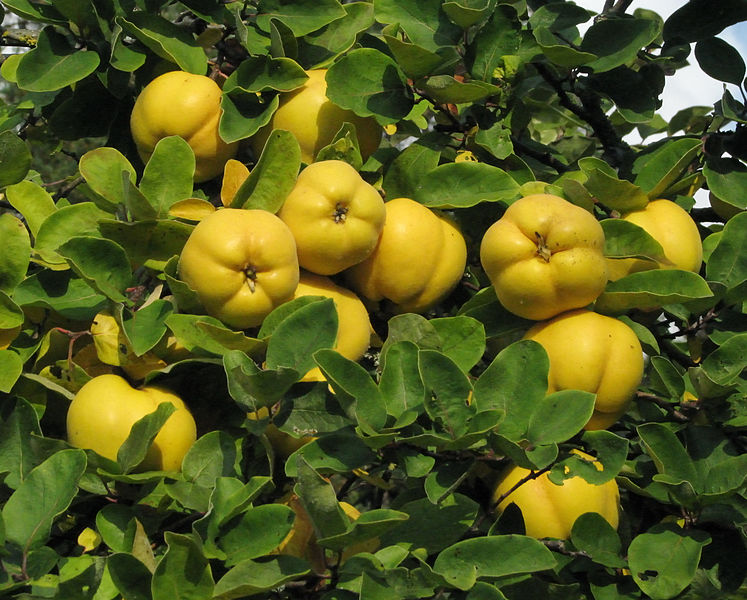
TRZ120 Quince ( Cydonia oblonga )
Edible quince trees produce fruits that can be used mostly for cooking, pies, jelly or some can even be eaten fresh. The fruit looks like an irregularly shaped pear or apple with a very tough flesh. But after being cut, quince has a lingering wonderful fragrance and becomes sweeter and softer after cooking. Quince trees are naturally small with very showy blossoms. Quinces are self-fruitful.
While some quince can be eaten raw, its true beauty is in the delicious fragrance and rosy-red color unlocked by poaching or cooking them. Quince jelly is a natural, because of the natural supplies of pectin in quinces. Quince is also delicious added to apple or pear tarts and pastries and quince paste is an elegant accompanient to cheeses such as manchego.
The fruit ripens in mid-fall and contain high levels of pectin, so are ideal for using in jams and preserves. The trees are attractive while in bloom and grow to about 15′ tall at maturity. Hardy in USDA zones 4-9.
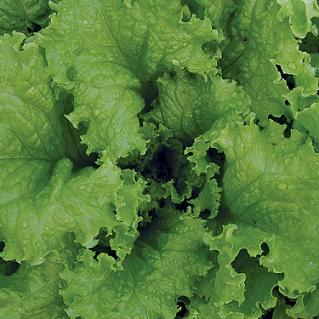
TWT227 SloBolt Lettuce
Slobolt is true to its name as the slowest lettuce variety to bolt. This frilly, bright green heirloom lettuce grows in thick clusters and has a pleasant flavor that is never bitter. A great choice for summer planting and Southern gardens, this old favorite has been grown since 1946.
Looseleaf and cut-and-come again.
Introduced in the mid 1940s by the USDA’s Agricultural Research Center in Beltsville, MD. Large thick clusters of light green frilled leaves are produced all summer. As its name suggests, this variety is very slow to bolt. Pleasing flavor, never bitter. Looseleaf, 45-55 days.
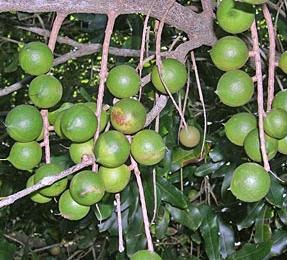
1A365 Macadamia Nut “Beaumont” ( Macadamia integrifolia x M. tetraphylla )
Beaumont is a superior hybrid variety of Macadamia nut for commercial orchards as well as home gardens. It grows quickly and bears a reasonable amount of good quality nuts after just 4 years and after 8 years can produce about 18 kg of nuts per tree. The nuts are easier to dehusk than most other varieties. It is well suited to most warm temperate and tropical climates in USDA Zones 10 and 11. Macadamia grows into a large tree unless pruned and makes a nice ornamental. Beaumont has attractive, maroon new growth. What most people do not know is that the pink flowers are wonderfully and intensely fragrant. Seeds should be soaked for a few days before sowing but shells must not be cracked. Germination is slow and erratic and usually takes place over several months.
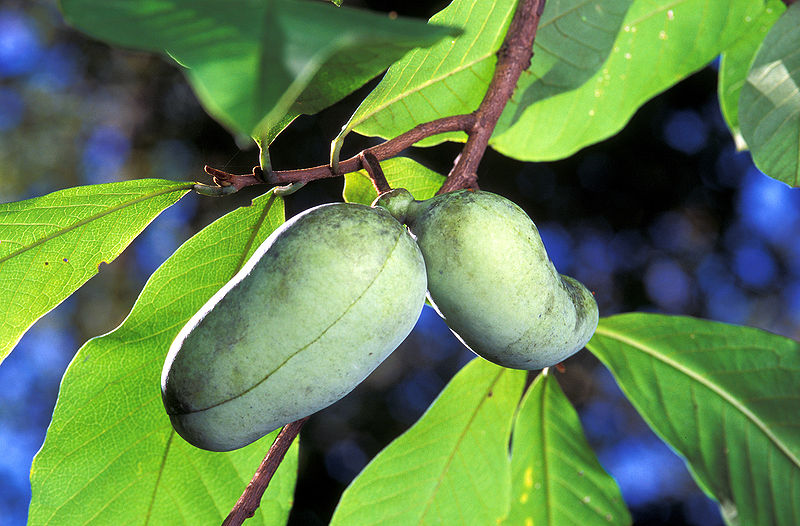
FDR95 Paw Paw Tree ( Asimina triloba )
from the Gulf Coastal plain to the Great Lakes. The fruit look
like short, fat bananas. They have a fragrant aroma, a custardy
texture, and a tropical taste. The best ones are rich, creamy
and sweet, reminding some people of banana cream pie. Compared
to apples, peaches and grapes, Pawpaw is higher in food energy,
and has more than double the amount of vitamin C, and is much
higher in minerals.
It is higher in protein, fiber, and carbohydrate. It has a much
higher content of amino acids in a good balance. It has mainly
unsaturated fatty acids, and is a good source of linoleic and
linolenic acids. It is a small tree, seldom taller than 25
feet. Grown in full sun, the pawpaw tree develops a narrowly
pyramidal shape with dense, drooping foliage down to the ground
level. In the shade it has a more open branching habit with few
lower limbs and horizontally held leaves. Pawpaw trees require
warm to hot summers, mild to cold winters, and a minimum of 32
inches (81 cm) of rainfall spread rather evenly throughout the
year, with the majority falling in spring and summer.
It can be grown successfully in USDA plant
hardiness zones 5 (-15 F/-26 C min. temp.) through 8 (15 F/-9 C
min. temp.)
Shading for the first year, and sometimes the second, is
normally required outside, and it is for this reason that
pawpaws are almost always found in nature as an understory
tree. Although the pawpaw is capable of fruiting in the shade,
optimum fruit yields are obtained in open exposure, with some
protection from wind (on account of the large leaves). Plant at
least two trees for fruit production, to ensure
cross-pollination. The soil should be slightly acid (pH 5.5-7),
deep, fertile, and well-drained. Good drainage is essential to
success. Pawpaws will not thrive in heavy soil or waterlogged
soil. In its native habitat the pawpaw has few pests of any
importance.
Note: These seeds need to be cold statified before
sowing.
We recommend using the Seedman’s Cold Stratification
Kits for cold stratification.
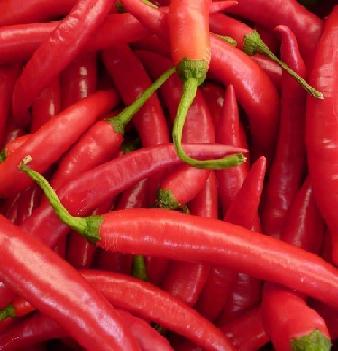
PEP782 Sriracha Hybrid Jalapeno Pepper ( Mildly Hot Pepper )
You can easily make your own Sriracha Sauce at home using these peppers. Sriracha Pepper is a hybrid Jalapeno. It produces large, uniform dark green peppers that mature to a dark red color. Mature peppers are around 5″ long and 1.25″ wide with thick walls.
Sriracha Pepper is mildly hot and ranges 2,300-2,500 Scoville. It is a great choice for roasting, pickling or slicing. Huy Fong Foods makes the extremely popular Sriracha brand sauce. They use red-hybrid Jalapeno peppers for their sauce along with other ingredients. Homemade Sriracha sauces will vary in taste but the two main components that resonate with Sriracha sauces are heat and garlic. 80 days.
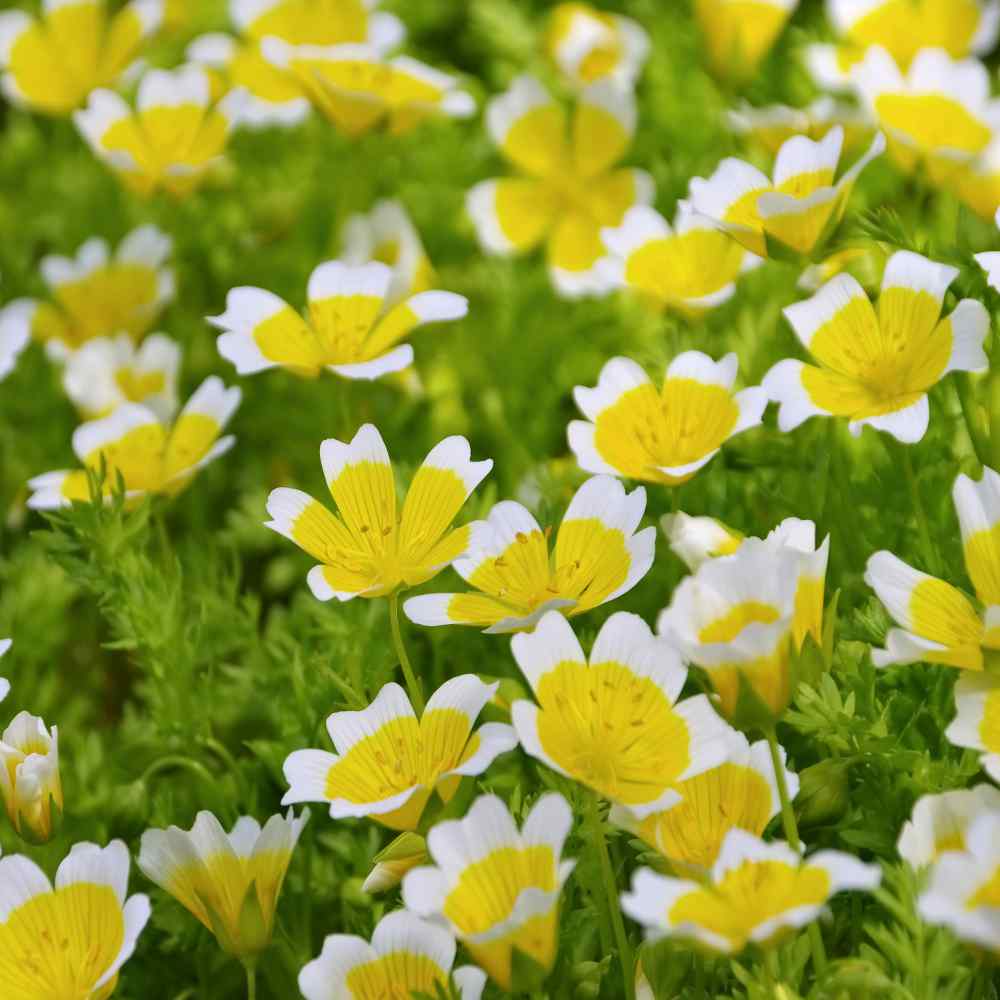
LET320 Poached Egg Plant ( Limnanthes Douglasii )
Also called Meadowfoam, and it is not only visually very striking and attractive, but it also has a very nice aroma as well. Limnanthes is not fussy about soil, and it will easily and quickly spread, creating a low-growing, shiny, carpet. Each meadowfoam plant can spread up to 30 inches! It only grows about 8 inches tall and makes a fragrant mat planted in mass.
A very long blooming annual with a mass of charming, 1 inch clear white and lemony yellow 2-toned blooms on 8 inch stems. It easily sows its own flower seeds for next year’s display. Meadowfoam plants are great as a ground cover plant, and they will grow well in pots too.
Sow Limnanthes Douglasii seeds directly outdoors in a prepared seedbed in spring after danger of frost has passed. Meadowfoam seed should be pressed into the soil and very lightly covered with soil. When large enough to handle, thin the seedlings.
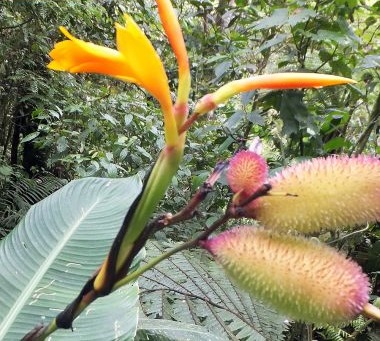
TRZ119 Orange Canna Lily ( Canna jaegeriana )
Canna lovers will adore this new variety and color! This Canna is native to forests in South America and the Caribbean. It grows shoots from an underground rhizome with green, oval-shaped leaves and a terminal inflorescence with small orange-red flowers followed by round, fuzzy, light-yellow fruits. This is a canna best suited for warmer climates, probably 8 and above, but can easily be grown in containers.
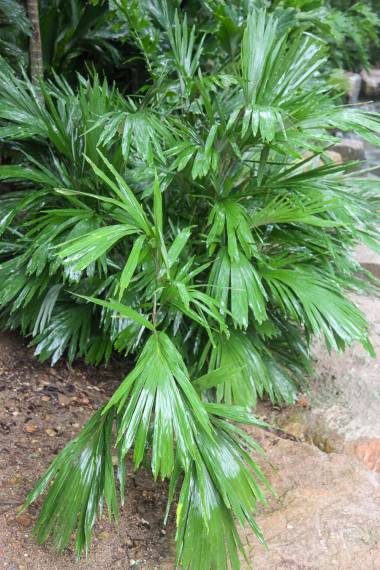
TRZ115 Bird Leaf Palm ( Arenga caudata )
Also known as Miniature Sugar Palm. Makes a wonderful houseplant and patio plant that will do well in larger planters, indoors it will require bright light.
A small, shrubby, understorey palm to 7 feet tall in warm zones, with densely clustering, thin, canelike stems and small leaves that are dark green above and silvery white below. The leaflets are roughly fishtail shaped and have jaggedly toothed margins. Widespread over Southeast Asia and does well in a shady spot in the tropical or warm subtropical garden. Zones 9b and higher outside
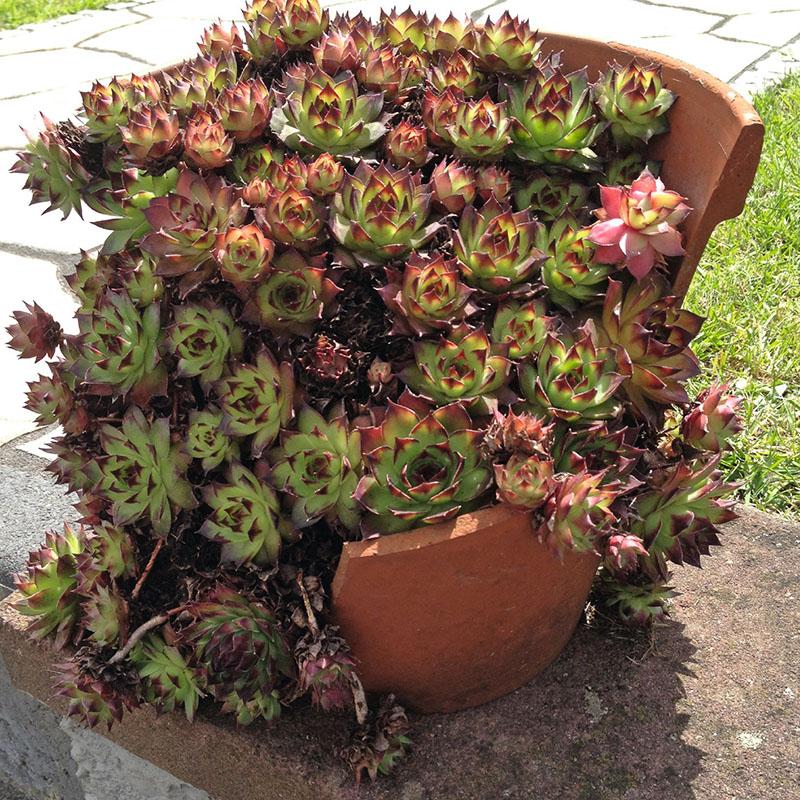
LET315 Hippy Chicks ( Sempervivum Pelleted Seeds)
You will love this delightful form of Hens and Chicks in shades of lime, green, and purple,This cool grower’s mix of hens and chicks includes a variety of colors—green, burgundy, gray, blue, and purple. Sempervivum Hippie Chicks are winter-hardy succulents that produce beautiful tight rosettes and send out stolons, spreading quickly. If conditions are ideal, Sempervivum Hippie Chicks shoot up flowers that attract bees.
Sempervivum Hippie Chicks are excellent structural plants for rock gardens, dry stone walls, containers, and green-roof plantings. And they are deer resistant. Low growing plant 3-5 inches tall. Perennial for zones 3-9.

SF404 Yunnan Banana ( Musa sp. “Yunnan” )
This beautiul banana grows to about 15 feet tall and is one of the hardiest species for cold winters as even the leaves can tolerate a bit of frost. Features huge, long leaves that grow to several feet. New leaves have red coloration on their undersides. Sought after as an ornamental and for its cold tolerance.
A beautiful, high altitude banana from China’s Yunnan Province and Arunachal Pradesh in India that has proven to be a very interesting cold tolerant species that will thrive under similar conditions as the legendary Musa basjoo and M. sikkimensis, even though not quite as hardy. It is a slender stemmed, extremely fast growing plant with large leaves supported by waxy white leaf stalks. Some confusion surrounds the introduction of this banana into cultivation: and it now turns out to be a new species, described in 2007 by Markku Hakkinen as Musa yunnanensis.
Considered hardy to zone 5. Exact hardiness is unknown. It may be close to as hardy as Musa basjoo, and has reportedly tolerated temperatures down to 10F. Upon freezing weather the plant will die back to its base, but quickly grows back once weather warms up.
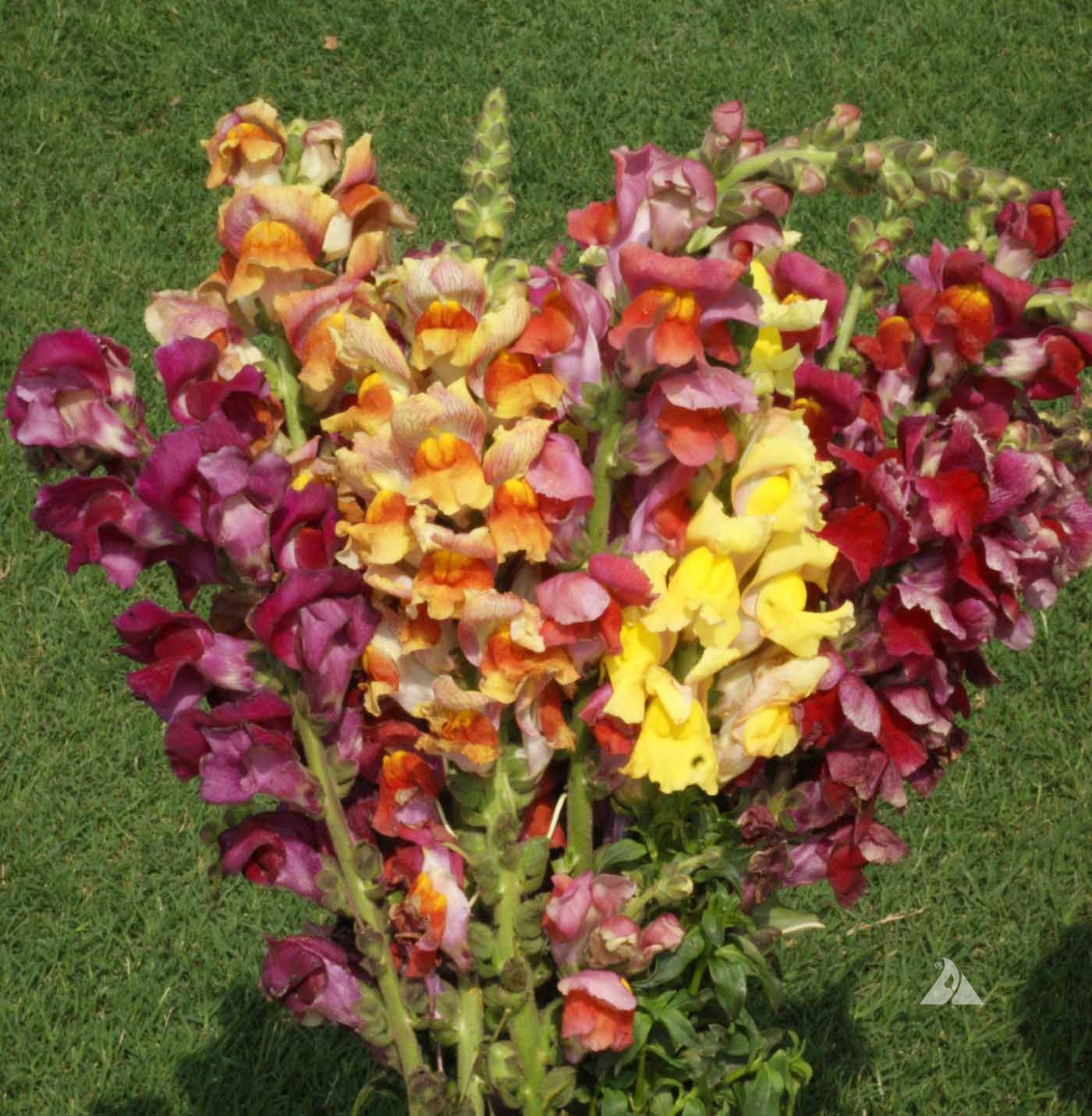
TPF244 Tetra Mix Snapdragon
Robust, scented flowers in an abundance of colors bring back memories of old-fashioned annual cutting gardens. This is a semi-dwarf snapdragon, which grows from 18-24″ high, enlivens garden beds and borders, as well as bouquets and offers a delightful fragrance. This is a great butterfly and bee attractor!
Snapdragons have been a garden favorite since the 1700s. Originating in the Mediterranean region, this flower gets its name from its unusual blossoms that look like a dragon’s head; the “mouth” even opens when squeezed. In medieval times, snapdragons often guarded the gates of castles because of a belief that they offered protection. Victorian women received bouquets of this flower with delight, since this meant a coming proposal; they also made infusions of the plant for cosmetic purposes.
Thomas Jefferson grew snapdragon plant seeds in his famous experimental garden, the first American to document their growth. In addition to being decorative in the garden, snapdragon blossoms are edible and can be used as a garnish for elegant desserts.
Annual.
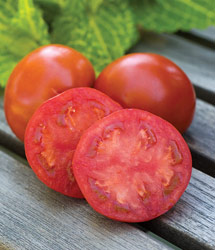
LET309 Sweetie Seedless
What a great new tomato! To obtain the absolute best flavor and fewest seeds, this fast maturing, very sweet variety must be grown away from other tomatoes. The Sweet Seedless Tomato is just like it name says, sweet with very few seeds! This juicy orange-red tomato variety is an extra tasty, very early tomato! Since this tomato has minimal seeds to digest, it offers a very outstanding taste. Since the Sweet Seedless does not store its sugars within its seeds, the sweetness is transferred to the flesh, making it extra tasty! Tomatoes may have some immature seeds.
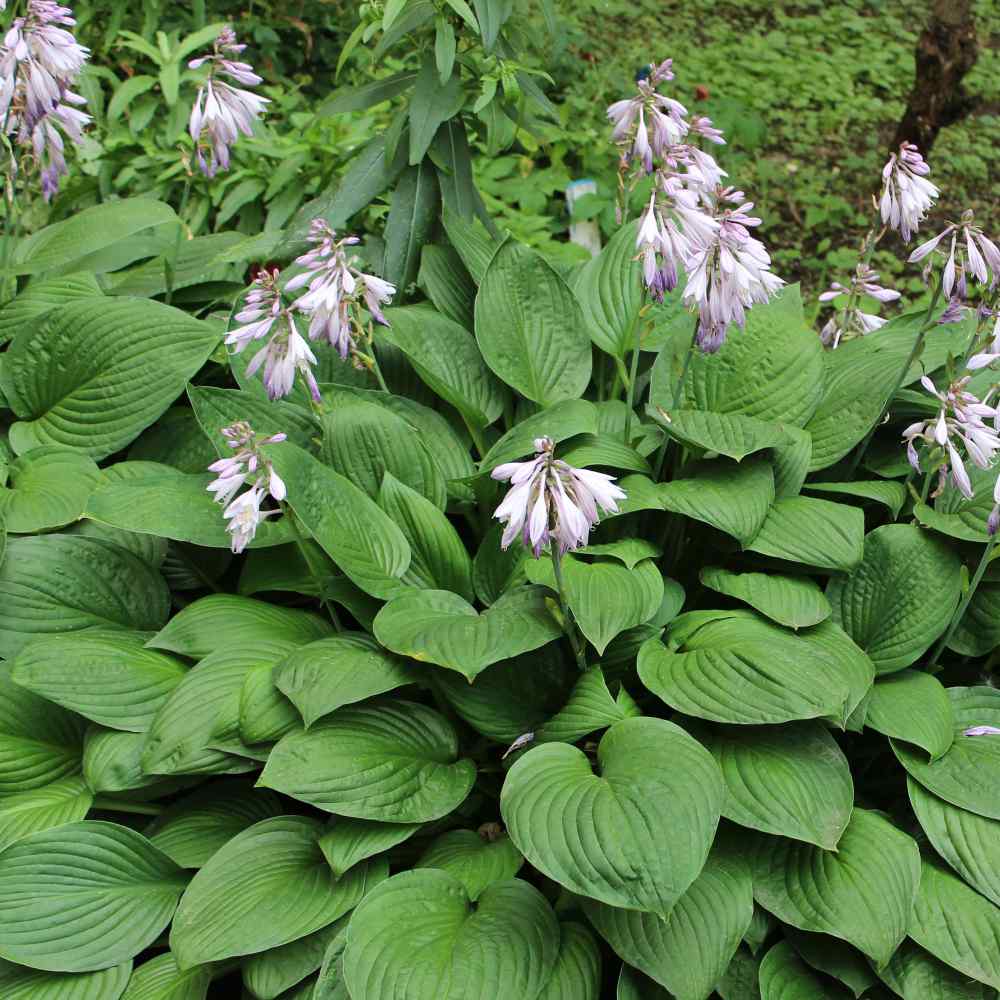
TWT216 Plaintain Lily ( Hosta Ventricosa )
If you have shade, start some Hosta seeds and enjoy this perennial. A great foliage plant that grows relatively quickly from seed and is easy to care for. Commonly called Plantain Lily, Hostas produce nectar rich flowers that hummingbirds can’t resist as well as bees and butterflies.
Great houseplant. Hosta Ventricosa looks beautiful in a shady garden, as a container plant, or even inside the house!
How To Grow Hosta From Seed: Growing Hosta seeds is not difficult, and they sprout nicely indoors, under normal house conditions, with temperatures running 60 – 70F. Use a “peaty” starter mix and just lightly cover the seed with peat moss. Keep the seed moist but not saturated until germination.
Sow seeds 8 – 10 weeks before frost season ends. Hosta care includes keeping the plant moist throughout the hot months of the summer. As a rule, they need 1 inch of water every week.
A perennial for zones 3-9, growing about 40 inches tall.
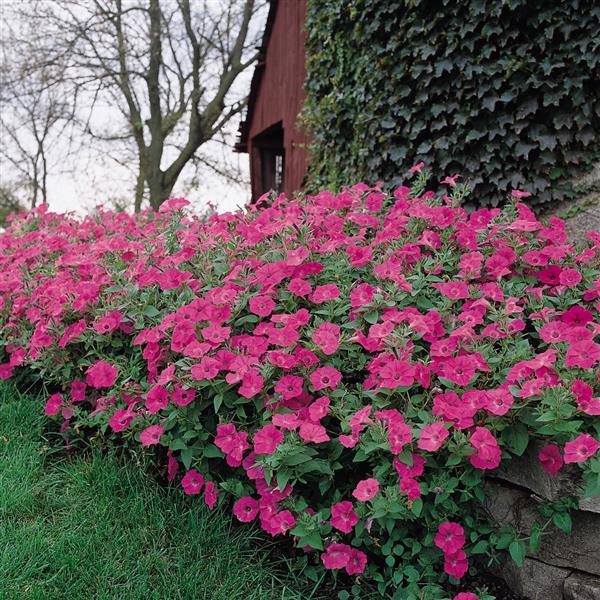
LET306 Tidal Wave Hot Pink Spreading Hybrid
Hot tropical color all over compact, very versatile plants transforms the garden or container into a summer paradise. The blooms range from 2½ to 4 inches across, and boast some of the brightest, richest pink tones ever seen on a petunia.
Hedge, vine or impressive groundcover – Tidal Wave does it all! The tallest and most vigorous of the Wave petunia family, Tidal Wave plants super-size colour into big spaces.
Excellent landscape performer with terrific recovery from rain. The plants resist lodging, so they won’t fall open and expose a bare centre like other petunias can.
Height, spread and spacing: Growth habit is based on how closely plants are placed – the closer the spacing, the taller the plants. Spaced a minimum of 12 inches apart, Tidal Wave petunias form a dense, mounded hedge, 16 to 22 inches tall.
Grown in a restricted space with support, they grow an extra 2 to 3 feet upward, like a vine.
Spaced up to 24 inches apart in the garden, the plants make a floriferous groundcover, spreading up to 5 feet across per plant.
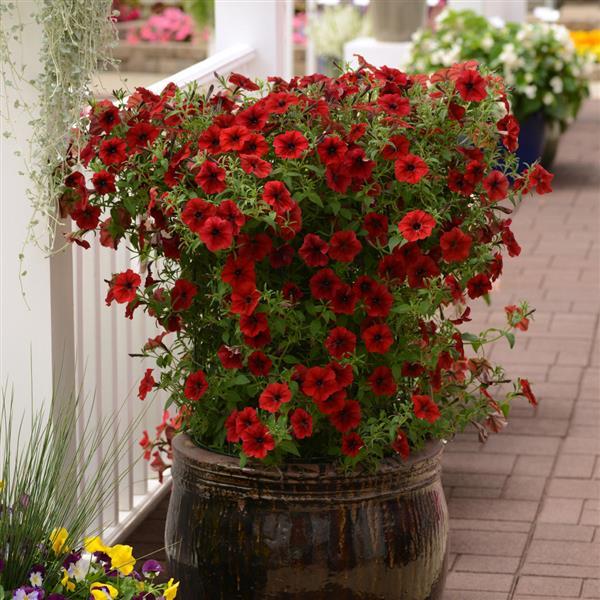
LET307 Tidal Wave Velour Red Spreading Hybrid
Attracts Bees, Heat Tolerant, Low Maintenance. Mountains of color in big gardens and containers! The biggest petunia series in the Ride The Wave family, Tidal Wave grows and grows and grows into an awesome, flower-filled hedge! These award-winning plants serve as excellent “screens” for unsightly air conditioners or to adorn wooden fences. They also work well in large planters. Space them 24 in. (60 cm) apart and watch them spread into an unbelievable groundcover!
Excellent landscape performer with terrific recovery from rain. The plants resist lodging, so they won’t fall open and expose a bare centre like other petunias can.
Height, spread and spacing: Growth habit is based on how closely plants are placed – the closer the spacing, the taller the plants. Spaced a minimum of 12 inches apart, Tidal Wave petunias form a dense, mounded hedge, 16 to 22 inches tall.
Grown in a restricted space with support, they grow an extra 2 to 3 feet upward, like a vine.
Spaced up to 24 inches apart in the garden, the plants make a floriferous groundcover, spreading up to 5 feet across per plant.
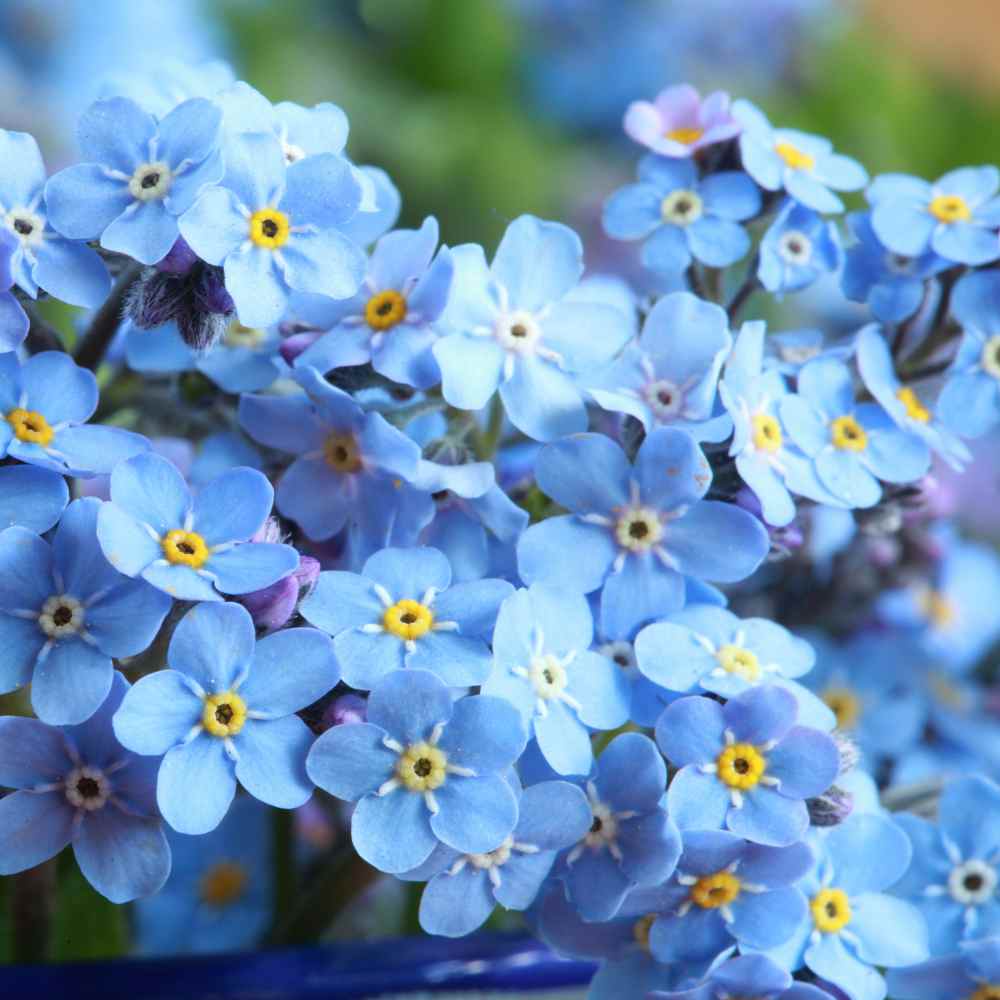
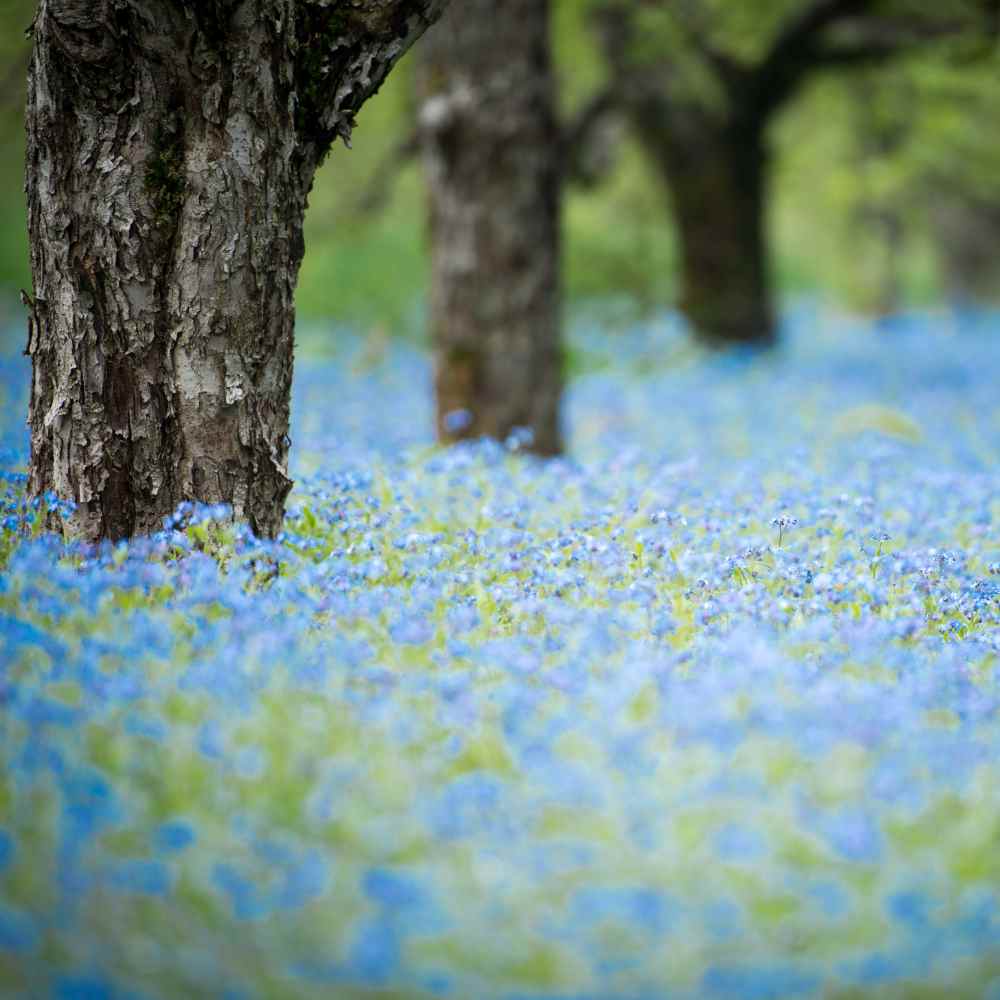
TPF255 Forget-Me-Not ( Myosotis Sylvatica )
One of the all-time world favorites among wildflowers often used at funerals. Forget-me-nots received their name based on the romantic legend: a medieval knight, gathering blue flowers along a stream for his lady love, was suddenly swept away by flood waters. As he disappeared, he tossed the bouquet to his lady with the immortal words, “Forget me not.”
Myosotis Sylvatica seeds will grow in all regions of North America and is very easy to establish. Blue Forget Me Not flowers will grow in sun or shade and will start to bloom early. In nature, this species grows wild in stream-beds and wet woodlands. So, in your garden, it prefers lots of moisture, and has good shade tolerance. Forget-me-not is low-growing and makes a nice ground cover plant as well as edging for the front of the border or even in containers.
How to grow Forget Me Not seeds: Myosotis Sylvatica seeds can be started either indoors or directly outside in a prepared seedbed. Indoors, in the late winter, sow Forget Me Not seeds in starter flats, and press the flower seeds into the soil and lightly cover. For directly sowing outdoors, prepare a seedbed by loosening the top several inches of soil and weeding. The Forget-Me-Not seeds can be sown when frosts are still possible. Thin the seedlings to 9 – 12 inches apart. Forget-me-not plants are liberal self-sowers. To encourage reseeding, leave spent flowers on the plant well until after they have faded. The Forget Me Not flower seeds will drop and produce more ground cover plants the next spring.
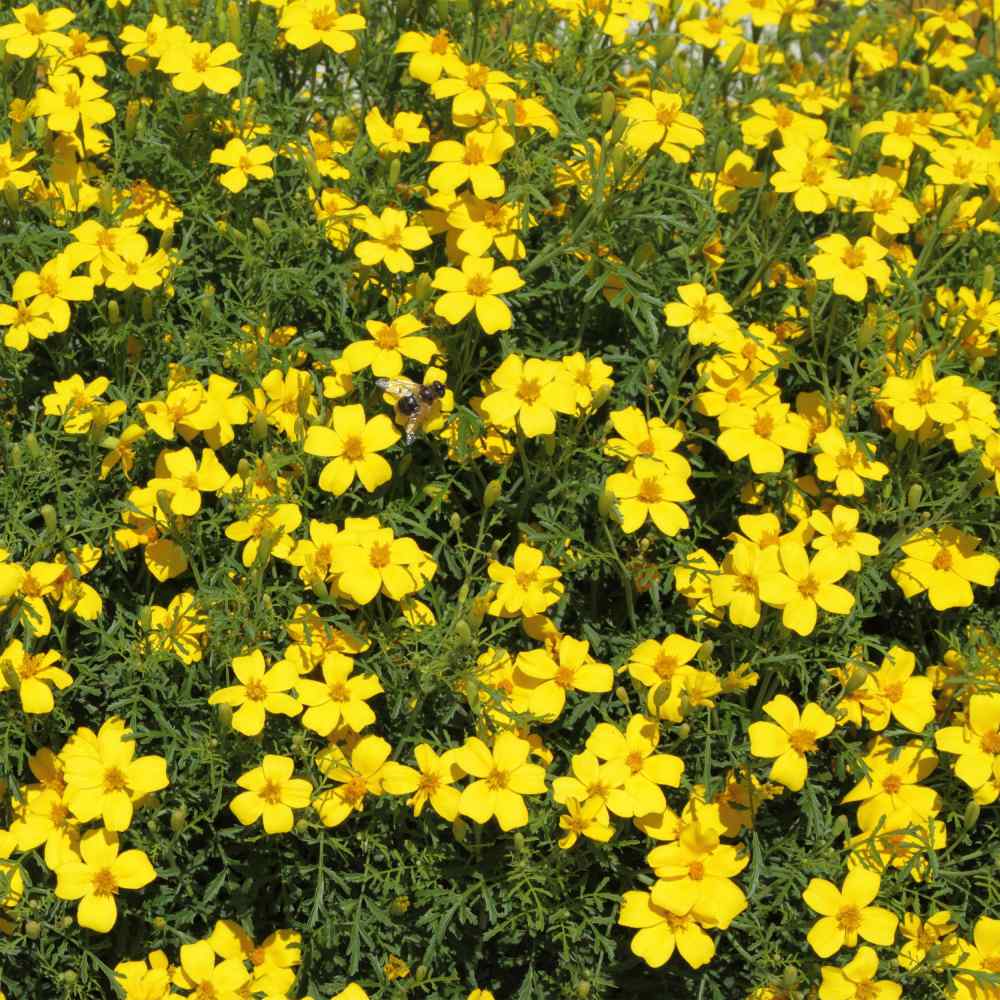
LET305 Hannay’s Lemon Drop ( Bidens humilis )
Also known as Bur Marigold. Bidens Aurea seeds grow quickly and easily into a sweet annual that makes a nice addition to the garden. This tall, long-stemmed plant shimmers from mid-summer until fall, producing beautiful golden yellow flowers. Each simple, five-petaled daisy is two-toned, with paler, white-tipped petals set round a darker middle. The ferny foliage of the plant truly makes this a unique flower grown from flower seeds.
Not too many gardeners know about Bidens Aurea. This hidden secret is making its way to popularity as people are appreciating its unique attributes. Bur Marigold will grow in clay and heavier soil as well as lighter soils, but it’s more likely to run on lighter ground. In can self-sow with the seeds popping up some distance away, weaving itself among other plants. It does not smother or crowd other plants. Grow the flower seed in baskets, containers, or directly in the flower garden.
An annual growing about 18 inches tall.
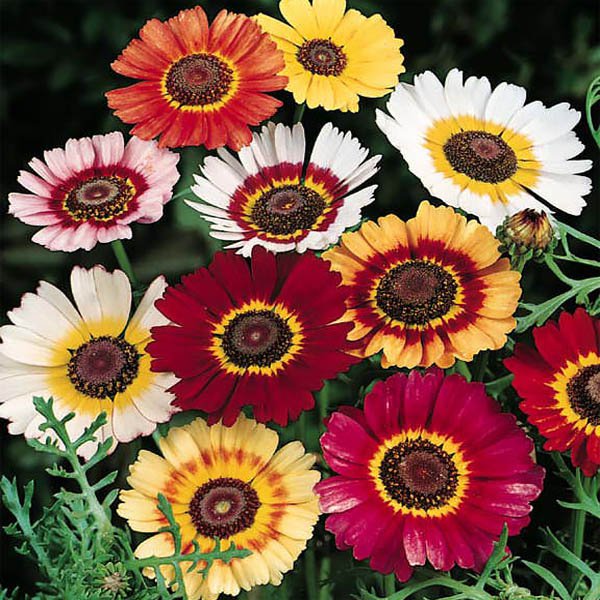
TWT210 Rainbow Mix ( Chrysanthemum Carinatum )
You will want to start these Chrysanthemum seeds and attract attention to your garden! The Rainbow Mix offers colors of purple, orange, scarlet, rose, salmon, yellow and white and puts on a dazzling display of color. Growing only 12 to 18 inches tall, they fit well in any flower bed.
Painted Daisies also make great cut flowers so that you can bring the color indoors! Some flower seeds can be difficult to germinate; however, this is not the case with Chrysanthemum flower seed. Grow Chrysanthemum Carinatum plants in a rich, well-drained, evenly moist soil and in full sun. Good drainage during the winter is essential. Hardiness Zone : 3b-9a.
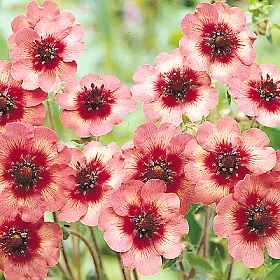
JB076 Melton Fire ( Potentilla nepalensis )
Tricolor flowers of deep red, soft crimson, and vanilla on spreading plants, excellent container plant, grows about 16″ tall. Drought tolerant. Deer resistant. Evergreen ground cover and border plant. Excellent cut flower. An almost perpetual flowering hybrid, this mounder produces its large bicolored strawberry-red ; lemon-yellow flowers all summer. Zones 4-9.
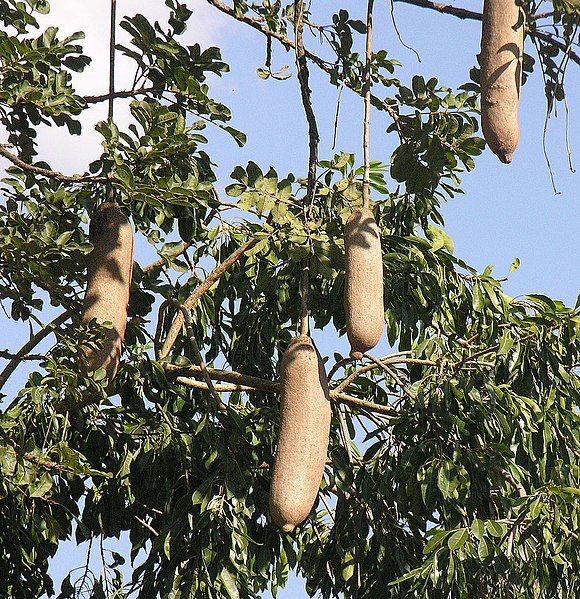
LET302 Sausage Tree ( Kigelia pinnata )
The Sausage Tree is cultivated for its unusual flowers and large, woody, sausage-like seed pods. If you are looking for an extra special tree, this fine tropical evergreen tree with amazing fragrant red flowers and strange long sausage shaped fruits that can reach 2 feet in length and weigh up to 15 pounds, suspended on long stems, is quite unusual.
A wonderful houseplant specimen that can be grown in tubs where the size of the container will limit it’s size. Excellent foliage plant with large, compound, pinnate, rough, dark green leaves. Evergreen and fast growing. Outside in zone 9b or higher, it will grow to 30 ft. or more and produce large sausage shaped fruits full of seeds, thus the name.
This plant is marginally subtropical and can stand some frost and temperatures down to 28F.
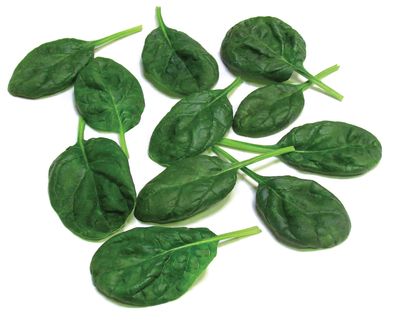
TCB101 Olympia F1 Spinach
45 days. Probably the best and most productive dark green plain leaf spinach for year-round sowing and harvests. Within its class, Olympia is slower to bolt and displays better eating quality than others. An excellent choice for cooking and year-round fresh spinach salads. Typically upright, it grows to 10 inches.
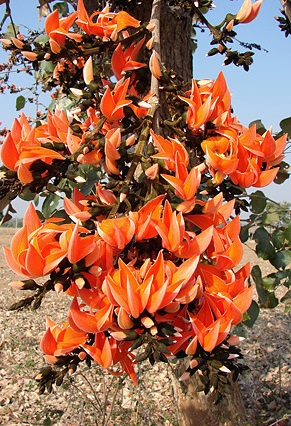
TRZ110 Parrot Tree ( Butea monosperma )
A wonderful, small to medium-sized, dry deciduous, tropical tree from savannas and low, dry forests in India, Sri Lanka and Burma.
The stunning, orange red flowers appear before the leaves. They look like parrots beaks and are pollinated by birds or palm squirrels. Butea is highly sought after as an ornamental flowering tree for the tropics.
Zone 9b or higher.
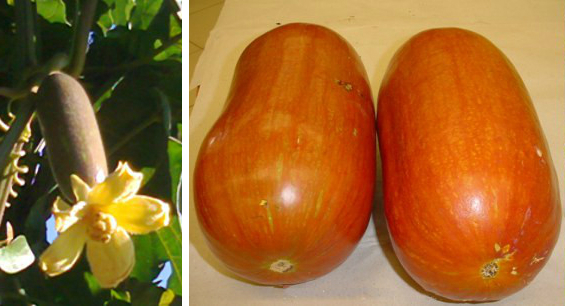
D8566 Cassabanana ( Sicana odorifera )
Young stems are hairy. The leaves are gray-hairy, rounded-cordate or rounded kidney-shaped, to 1 foot wide, deeply indented at the base, 3-lobed, with wavy or toothed margins.
Flowers are white or yellow, urn-shaped, 5-lobed, solitary, the male 3/4 inch long, the female about 2 inches long.
Renowned for its strong, sweet, agreeable, melon-like odor, the striking fruit is ellipsoid or nearly cylindrical, sometimes slightly curved; 12 to 24 inches in length, 3 to 4 inches in diameter, hard-shelled, orange-red, maroon, dark-purple with tinges of violet, or entirely jet-black; smooth and glossy when ripe, with firm, orange-yellow or yellow, cantaloupe-like, tough, juicy flesh.
The cassabanana is believed native to Brazil but it has been spread throughout tropical America.
Venezuelans and Brazilians are partial to the vine as an ornamental, but in Cuba, Puerto Rico and Mexico it is grown for the usefulness of the fruit.
A high temperature during the fruiting season is needed to assure perfect ripening. Brazilians train the vine to grow over arbors or they may plant it close to a tree. However, if it is allowed to climb too high up the tree there is the risk that it may smother and kill it.
The cassabanana remains in good condition for several months if kept dry and out of the sun.
The fruit has high market value in Puerto Rico. It is cut up and sold by the piece, the price being determined by weight.
The ripe flesh, sliced thin, is eaten raw, especially in the summer when it is appreciated as cooling and refreshing. However, it is mainly used in the kitchen for making jam or other preserves. The immature fruit is cooked as a vegetable or in soup and stews.
People like to keep the fruit around the house, and especially in linen- and clothes-closets, because of its long-lasting fragrance, and they believe that it repels moths. It is also placed on church altars during Holy Week.
Medicinal Uses: In Puerto Rico, the flesh is cut up and steeped in water, with added sugar, overnight at room temperature so that it will ferment slightly. The resultant liquor is sipped frequently and strips of the flesh are eaten, too, to relieve sore throat. It is believed beneficial also to, at the same time, wear a necklace of the seeds around the neck.
The seed infusion is taken in Brazil as a febrifuge, vermifuge, purgative and emmenagogue. The leaves are employed in treating uterine hemorrhages and venereal diseases. In Yucatan, a decoction of leaves and flowers (2 g in 180cc water) is prescribed as a laxative, emmenagogue and vermifuge, with a warning not to make a stronger preparation inasmuch as the seeds and flowers yield a certain amount of hydrocyanic acid.
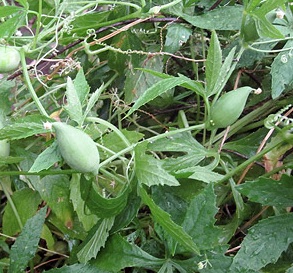
IP122 Caigua Exploding Cucumber ( Cyclanthera pedata )
This is one of the most interesting plants we have found. It is a climbing member of the cucumber family that can be used as a vegetable in salads, or steamed, it has a nice sweet flavor. It is also an herbal plant, the fruit has anti-inflammatory, weight reducing ( it is often sold in capsule form as a natural weight loss product ), lipid-absorbing, cholesterol and blood sugar regulating affects.
Can easily be grown in the garden, on a fence or trellis. It is an annual plant. One of the most interesting aspects of the plants is that when ripe, the fruits become spring-loaded missile devices, splitting and turning themselves inside-out to launch their seeds up to 5-6 feet away into the garden. This is quite the conversation plant.
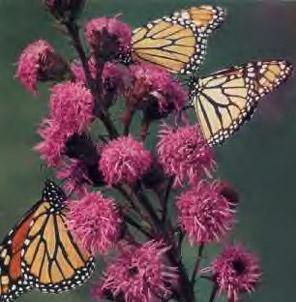
JB079 Meadow Blazing Star ( Liatris ligulistylus )
Considered one of, if not the best Monarch Butterfly attractors. The beautiful purple blossoms of this Liatris should be your first choice for attracting Monarch and other butterflies to sunny, medium-soil sites in late summer. It’s not uncommon to see dozens of Monarchs nectaring on a stand of Meadow Blazing Star. It blooms primarily in August, just when the Monarchs are preparing for their long migration south; a synchronization that has evolved over hundreds of years, and a good example of how native plants and pollinators are deeply dependent on one another.
These upright plants can reach 5′ in rich soils; in a garden setting you may want to stake them. The height of this Liatris make it an easy target for Monarchs and other butterflies and birds to feed. Blossoms often appear all at once along stems and last for many weeks late summer. Birds find the seeds appealing later in the year.
A perennial best suited for zones 3-7.
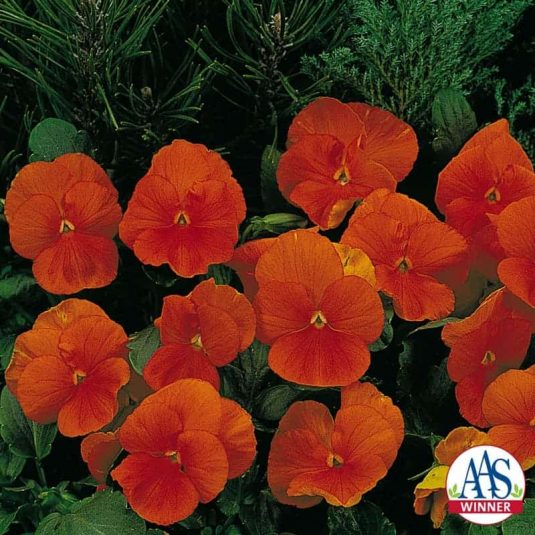
LET289 Padparadja
1991 AAS Flower Winner. Padparaja (Pa pa ra’ja) is a true orange pansy that retains the orange color under heat stress conditions. The deep orange, pumpkin color, stood out at AAS Flower Trials across North America. Padparadja is named after the rare and valuable orange sapphire originally found in Sri Lanka.
Padparaja can be grown as a flowering bedding plant for spring or fall. The two-inch blooms are produced on stems held above the foliage. In garden trials, Padparaja continued to flower under hot, humid August conditions. The heat and weather tolerance were above average.
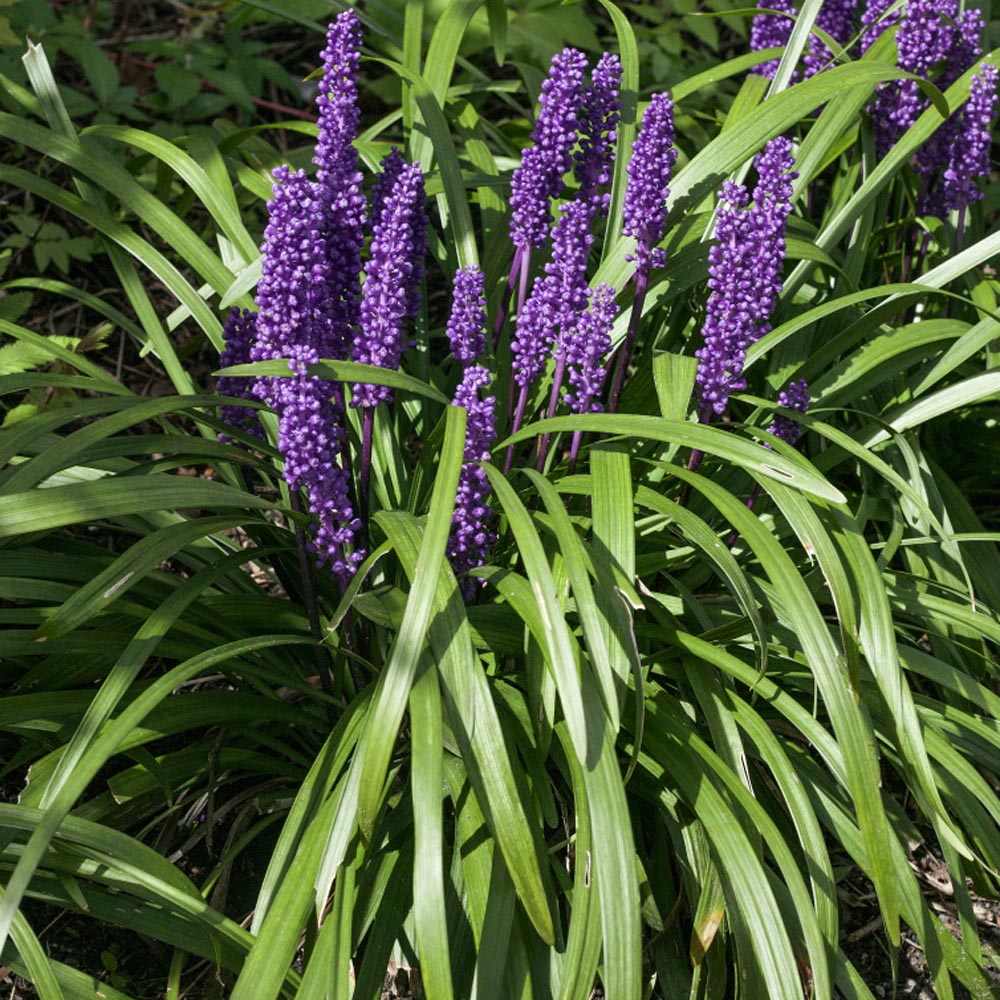
TWT200 Monkey Grass ( Liriope muscari Big Blue )
If you need a decorative border or edging plant, start Monkey Grass seeds, and enjoy this popular ornamental grass plant. Also known as Lily Turf, this ornamental grass has evergreen foliage and violet blue flower spikes during the summer. Monkey Grass is an excellent ground cover for landscapes, and it works nicely for container use as well.
How To Grow Monkey Grass From Seeds: Start Lily Turf seeds indoors in the early spring. Use small pots filled with seed starting mix. Place the ornamental grass seeds onto the soil and cover 1/4 inch with sand or soil and keep the seeds moist. Transplant outdoors once soil temperatures have warmed and frost danger has passed. Follow a regular watering schedule during the first growing season to establish a deep, extensive root system. For a neat appearance, remove old foliage from Liriope muscari before new leaves emerge. Divide Monkey Grass clumps every 2 to 3 years in early spring. Mow in early spring to remove old foliage. Lilyturf will tolerate drier conditions once established. Hardy for zones 5-11. Grows 6 to 12 inches tall and spreads 12 to 24 inches.
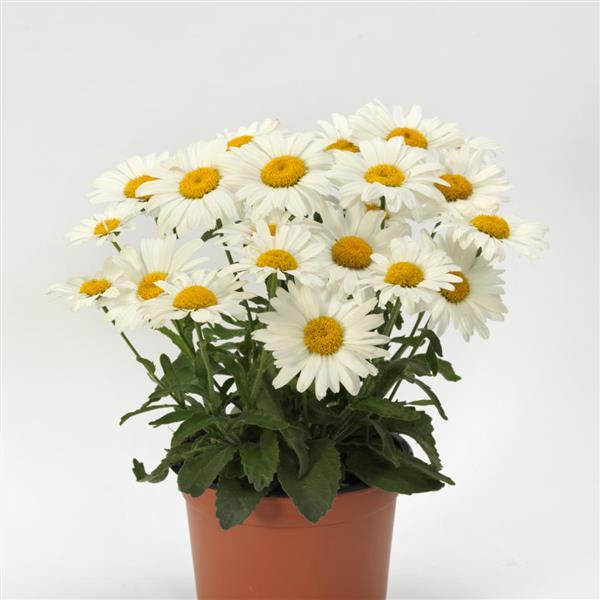
LET287 White Lion ( Leucanthemum x superbum )
F1, An early Spring Shasta, programmed for spring blooming in short days with no need for extra lighting, forms tidy mound, perfect in South.
A compact and early flowering Shasta Daisy, featuring huge white, daisy flowers with a yellow center. Flowers earlier than most varieties, usually in early spring. Grows in a compact mound to 8-10″ tall and a little wider. Full to part sun. Hardiness Zone : 3b-9a.
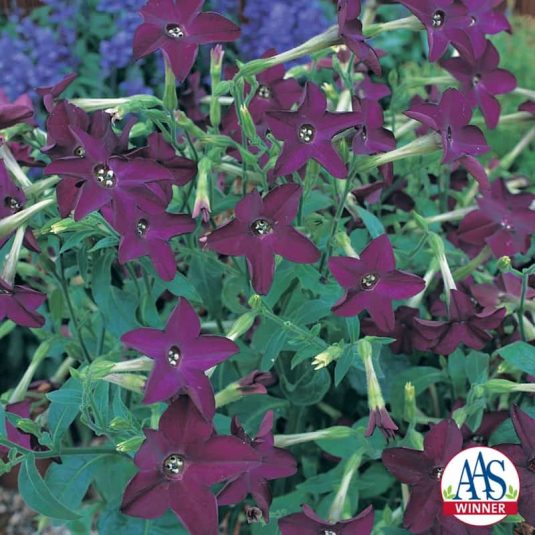
TCB105 Nicotiana Perfume Deep Purple F1 (Pelleted Seeds)
2006 AAS Bedding Plant Winner. (Aka Heaven Scent) The scent is back! This free flowering hybrid has upward flowers, and the aroma – prepare your olfactories for takeoff! Perfume Deep Purple flowers are shaped like stars. The stars shine at night and this is when Perfume Deep Purple begins its performance. The unique quality is the strong fragrance which scents the air in the evening. The fragrance is not wasted during the day when many people are working. The nightly release of the perfume will entice gardeners to relax and linger in their gardens.
Consider Perfume Deep Purple as natural aromatherapy. The rich, lavish deep purple flower color is another unique trait, distinct from other nicotianas. Perfume Deep Purple is easily grown from seed, young green bedding plants or flowering pot plants. Nicotiana, named for Jean Nicot, who introduced tobacco to the French Court, needs a sunny location and is perfectly adaptable to container culture.
If your summers are hot and humid, Flowering Tobacco is the annual you must grow. It thrives on the very same weather that makes others flop and give up the ghost! And the scent is sweet without being cloying, evocative of old-fashioned cottage gardens. You will love it!
Perfume Deep Purple does not require pinching, pruning or deadheading to maintain a crown of starry blooms all summer. Quite heat tolerant, plants need minimal maintenance. Only water and fertile soil are needed for Perfume Deep Purple to bloom profusely all summer. Grow stars in your garden this summer – plant Perfume Deep Purple. An annual that is easily grown in containers and the flower garden, growing only about 20 inches tall.
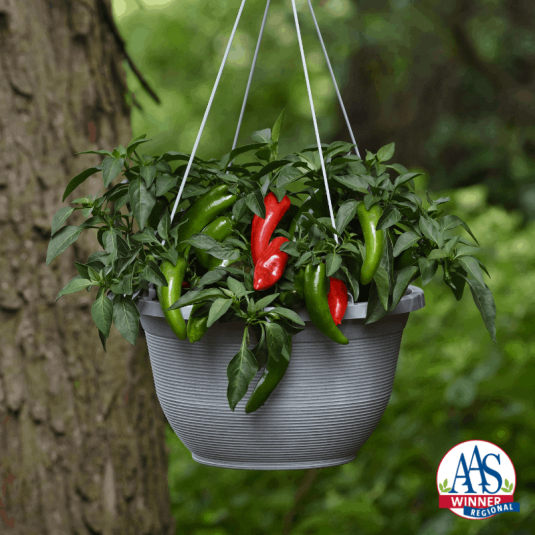
LET285 Pot-a-Peno ( Mildly Hot Jalapeno Pepper )
2021 AAS Edible Vegetable Winner. Pot-a-peno is a fun new jalapeno pepper with a compact habit perfect for growing in containers and hanging baskets. Plentiful small, green jalapeño fruits have a traditional spicy zip that is great in any dish where you want a little punch of spice. Simply leave the fruit on the vine a few extra weeks and they will ripen to red for a sweet, spicy flavor.
This variety is earlier to mature than other jalapenos giving you a head start on your garden’s harvest. A unique trait of Pot-a-peno is how the fruit hangs down beneath the plant making it very easy to harvest without damaging the appearance or productivity of the plant. A dense foliage canopy makes for an attractive addition to your patio or balcony garden.
With Pot-a-Peno, it is easy to grow Jalapeños in a basket! Early-fruiting Pot-a-peño has a unique cascading habit that’s perfect for a hanging basket or premium container. It’s a great addition to any vegetable garden!
Pot-a-peño’s unique cascading habit is perfect for a hanging basket or container – an ideal addition to any patio or small-space garden.
Early maturing means this will be one of the first peppers to fruit in the garden.
Tons of jalapeño fruit grow under a dense canopy of small, dark green leaves.
Harvest fruit green for a traditional spicy zip in any dish or allow to ripen to red for a sweet, spicy flavour. 60-65 days.
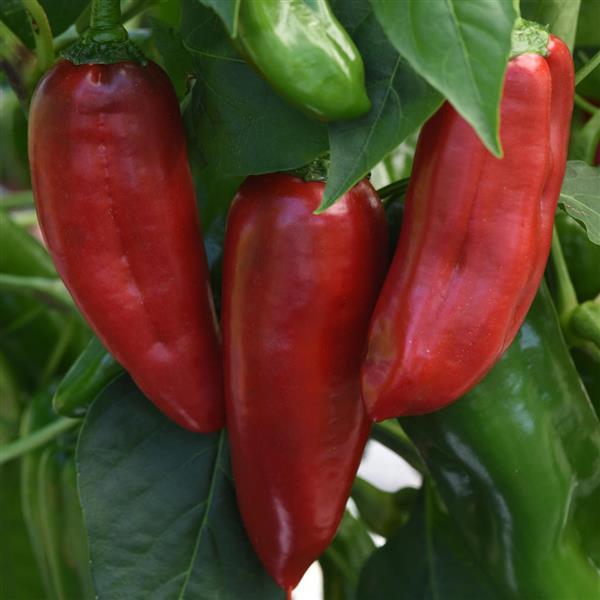
LET284 Peppi Red ( Sweet Seedless Pepper )
Seedless sweet peppers. The Peppi pepper collection will grow seedless fruit under the right conditions! Grow plants in isolation from other, non-seedless peppers to produce seedless fruit that makes chopping quick and easy for recipes.
These small, pointed fruits offer incredible sweetness and rich flavour.
The fruit are often seedless and are great for snacking fresh off the plant.
To produce seedless fruit, it is required to grow it in isolation from other (non-seedless) pepper varieties.
If it is not isolated, it will produce larger, great-tasting fruit with just a few seeds.
Best grown in-ground with support of stakes or a cage. It is a large plant in the ground, growing 36-48 inches tall and a spread of 24-36 inches or so. 50-55 days.
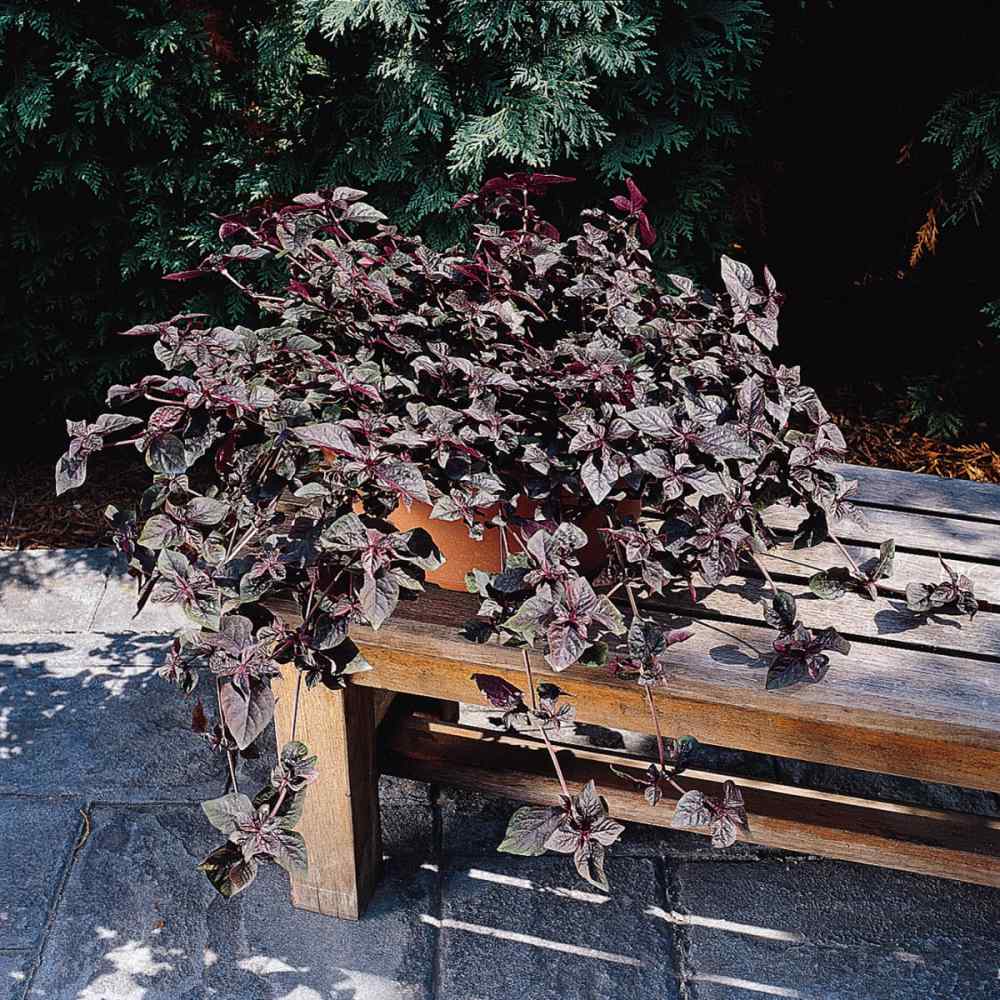
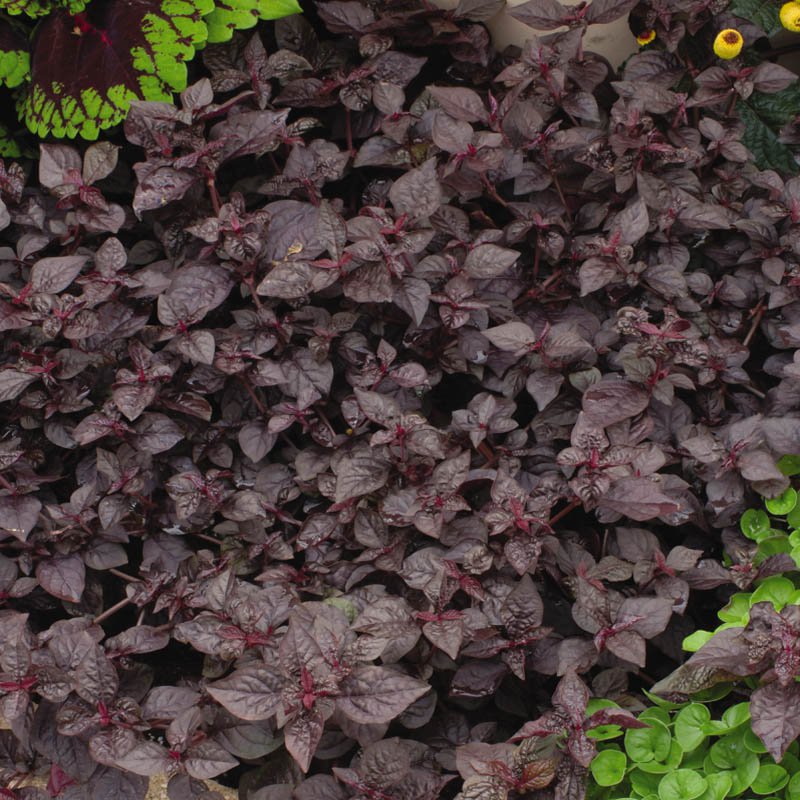
LET280 Purple Lady ( Iresine Herbstii )
This dark purple-leafed accent plant is ideal for mixed containers, as a unique hanging basket or planter variety, and as a ground cover in the landscape. Iresine Purple Lady makes a low and prostrate, spreading 3 to 4 feet so it fills in nicely and cascades as the branches get longer and heavier. Ideally suited to full sun or shady conditions, Iresine can withstand more sun in humid areas like Florida. Also called Beefsteak Plant and Chicken Gizzard.
You will not be disappointed with this trailing ground cover! Iresine is a low growing annual trailer in shades of bright purple leaves and stems. Plant it in empty areas between flower groups and it quickly forms a dense mat of brilliant color. It even chokes out weeds! The perfect choice for a splash of vivid color in front of flower beds. You may choose to grow it in hanging baskets or containers where it will trail gracefully. Only 6 – 8 inches tall and loves the heat!
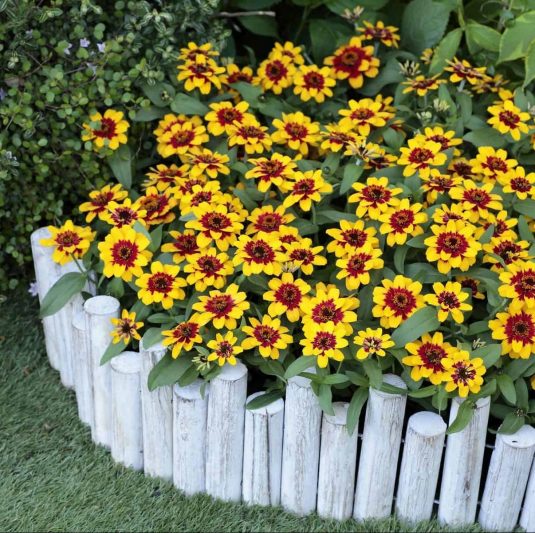
TWT198 Profusion Red Yellow Bicolor
2021 AAS Flower Winner. “JUST SO CUTE! WOW, WOW WOW!” When multiple judges write comments like that, it’s no surprise that it’s a Gold Medal Winner! Introducing…a beautiful new bicolor addition to the popular Profusion series of zinnias. This gorgeous zinnia starts the season with a bold vibrant red center ring surrounded by golden-yellow outer petals. As the season progresses, the aging flowers morph into soft, beautiful shades of apricot, salmon, and dusty rose to bring a plethora of color to the garden, all from one variety!
Trial garden visitors clamored over this floriferous and compact plant during the summer trials noting how well the plant continued to bloom new flowers over old so there was never a decline in the beauty presented by Profusion Red Yellow Bicolor.
Profusion Red Yellow Bicolor is also the recipient of the Fleuroselect Gold Medal award for performance in European trials. Grows about 12″ tall.
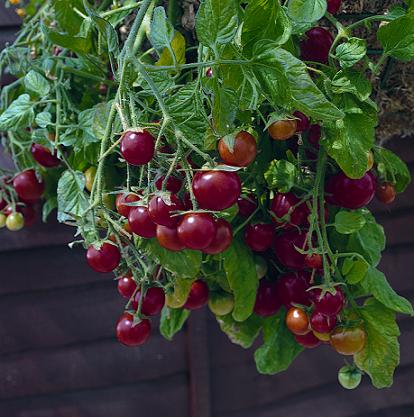
LET279 Very Cherry Cascade
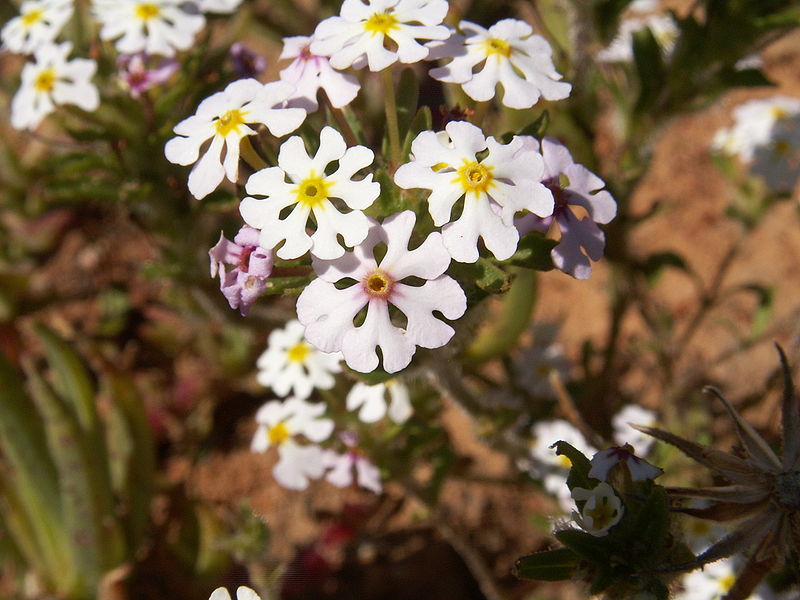
IM083 Midnight Candy ( Zaluzianskya capensis )
Wow, the delicious fragrance of this rare South African plant unlike any other. Most after dark, so plant it near a bedroom window or grow in a container on the patio to savor the intoxicating fragrance! An excellent container plant, grow in 12 inch hanging baskets or patio pots. After it flowers over a long period, simply cut back to 4” tall for a second round of bloom.
With the setting sun the ‘night phlox’ opens up tilling the garden, patio or conservatory with a delicious and powerful fragrance that gives the air, particularly on a warm evening, a tropical aroma. Easy to grow, sow this Zaluzianskya a little in many places, where you walk or sit in the garden. A wonderful annual ( perennial in very warm zones) plant growing about 12-20″ tall and blooming in 12 weeks from seed.
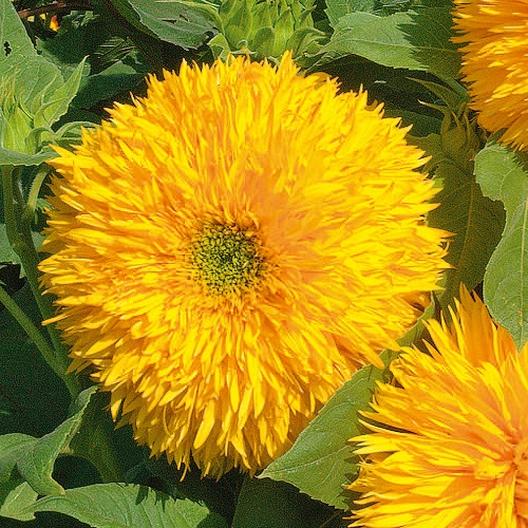
LET276 Giant Teddy Bear
One of our favorite sunflowers that produces cuttings for vases, and attracts bees, birds and butterflies. These plants bloom heavily with large 8 inches wide, fluffy fully double blooms, resembling golden-yellow pompoms. Borne in clusters on stiff, course stems, the unusual flower heads continue over a long season and last a long time in a vase.
Although much taller than other garden plants, this multi-branching plant is not too tall to add to the back of a bed or border in a cottage, informal, cutting, or wildlife garden, where the flowers beckon to bees, butterflies, and beneficial insects, and the tasty seeds bring the birds flocking.
A favorite of florists for their unique texture, Tall Teddy Bear Sunflowers are a big hit with gardeners as well! Easy to grow, these fluffy headed beauties will reach nearly 6 feet tall! Be sure to cut sunflowers in the early morning to encourage longer-lasting blooms.
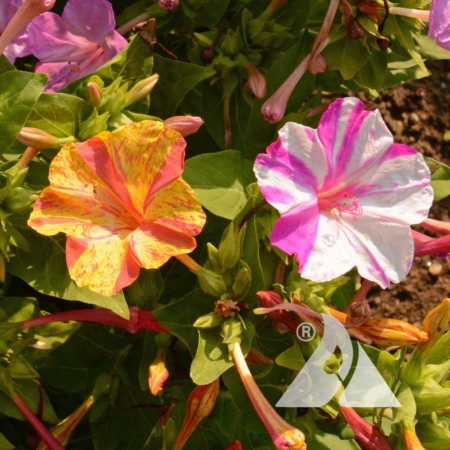
TST190 Broken Colors Four O Clocks ( Mirabilis )
Broken Colors Four O’Clock has bi-colored and mottled flowers in shades of pink, red, rose, white, and yellow. This old-time garden favorite gets its common name from its late afternoon to early morning bloom time. It is a tender perennial that forms tubers, and flowers are fragrant and trumpet-shaped. Attracts birds and butterflies. Plants are easy to grow and thrive almost anywhere, reseeding readily.
A single plant produces myriad 1- to 2-inch trumpet-shaped blooms in all combinations of raspberry, lemon-yellow, orange-golden, and frosty-white. Grows from 12 to 36 inches tall.
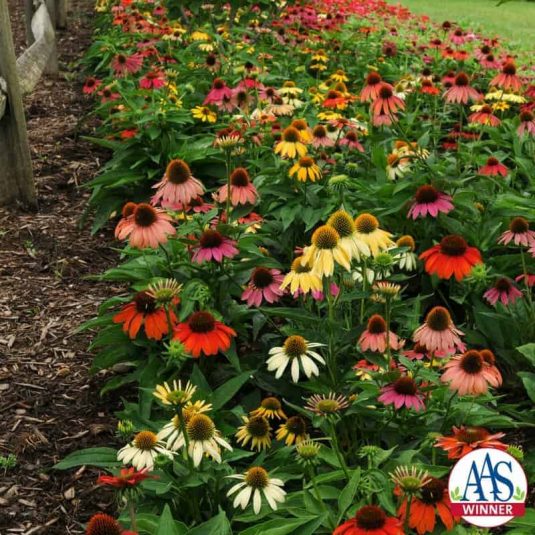
LET275 Cheyenne Spirit Echinacea
2013 AAS Flower Winner.
This stunning first-year flowering Echinacea captures the spirit of the North American plains by producing a delightful mix of flower colors from rich purple, pink, red and orange tones to lighter yellows, creams, and white. This wide range of flower colors on well-branched, durable plants are sure to please the color preferences of any gardener. As an added bonus, ‘Cheyenne Spirit’ does not require a lot of water and offers a wide range of uses from the perennial border, in a mass landscape planting, in a butterfly garden or as a cut flower.
The AAS judges and their trial garden visitors raved about the attractiveness of the flowers and the range of colors while appreciating its sturdiness and low water needs. Even during wind and rain, this compact plant does not topple over like many Echinacea. The variety of intense, bright colors adds sparkle to the garden from mid-summer through fall. As an added bonus, this maintenance-free Echinacea doesn’t even need deadheading to provide summer-long beauty.
Cheyenne Spirit is also the recipient of the Fleuroselect Gold Medal award for performance in European trials.
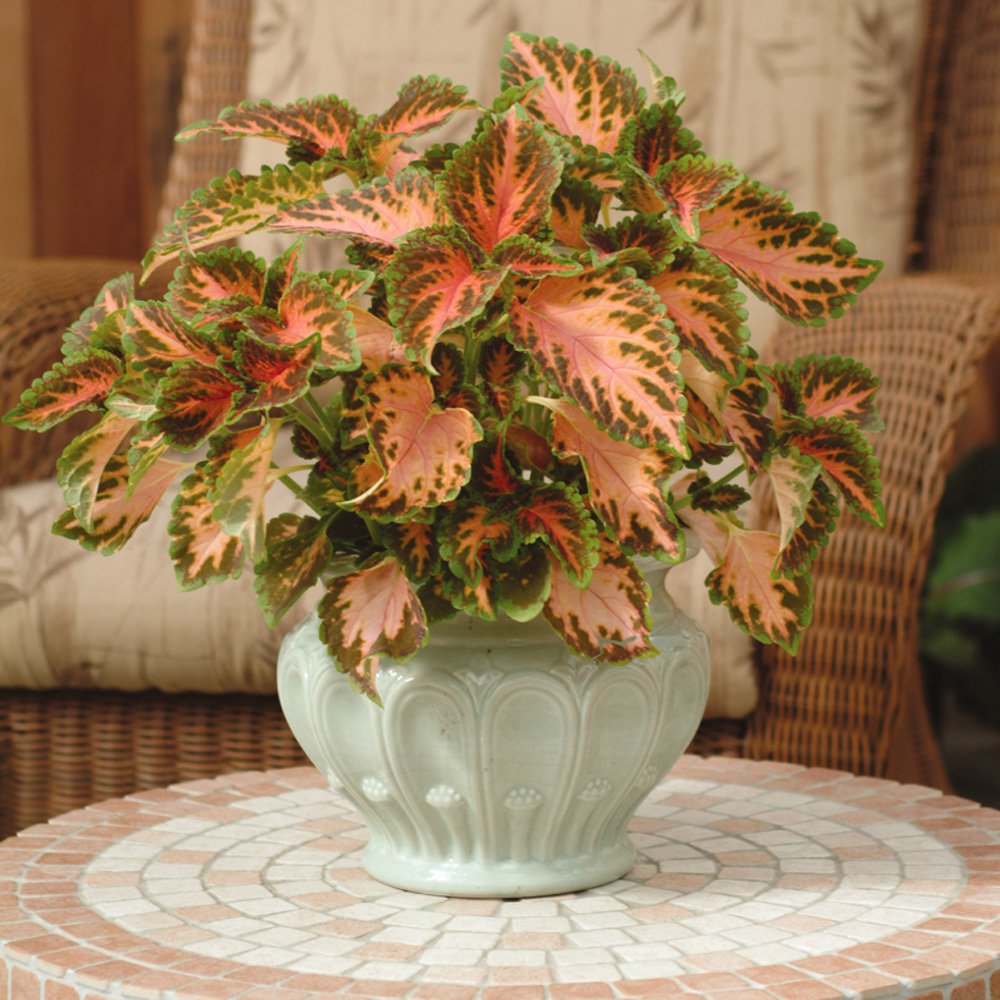
LET274 Wizard Coral Sunrise
Growing the awesome annuals from flower seeds is so fun and rewarding, and you can fill your landscape with these wonderful foliage plants! Often called Painted Leaf, Coleus plants feature colorful, exotic leaves that do well in sun or shade. These Coleus plants are compact with medium-size leaves, and they combine beautifully with other varieties for colorful containers and baskets.
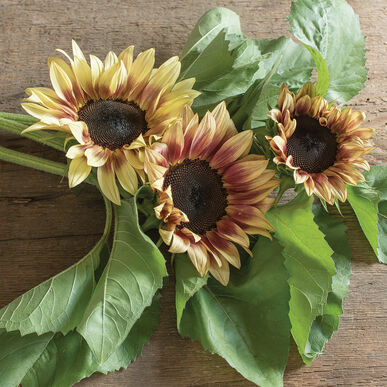
LET269 Procut® Plum Sunflower
Exciting new addition to the ProCut series. Muted plum-to-cream bicolor blooms combine well with soft or vivid colors and are every bit as early and reliable as the other well-known ProCut colors. Single-stem plants have tall, strong stems and 4–6″, pollenless blooms. Another exciting introduction from U.S. plant Breeder Dr. Tom Heaton and company. Grows 60-72 inches tall.
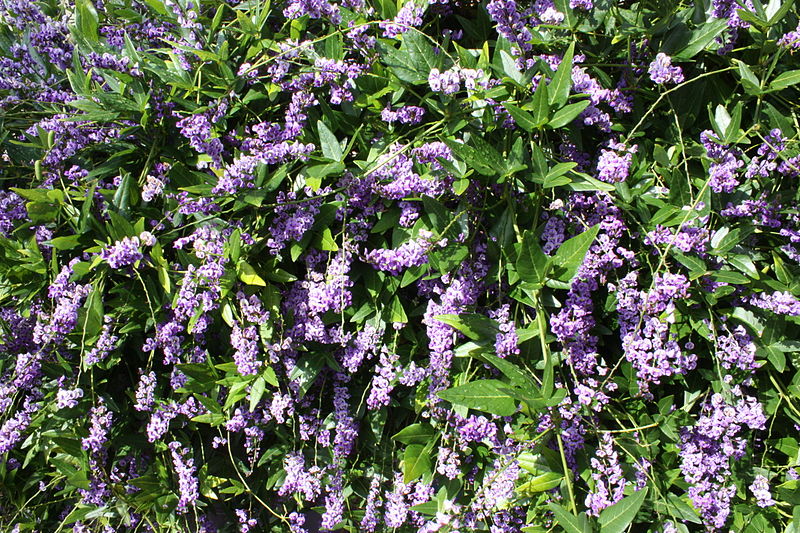
LET255 Australian Wisteria ( Hardenbergia comptoniana )
Ideal flat ground cover, can be used to scramble over fences, garages & pergolas. Thrives in moist well drained soil in a sunny, open position. A species of flowering plant in the pea family, Fabaceae, native to Western Australia. A twining vine, it produces purple flowers in the spring. It is found on sand dunes and sand plains, and in open forest, on sand- or clay-based soils. It is readily cultivated in the garden, where it does best in a part-shaded position.
It has been in cultivation for many years and is widely grown both in Australia and overseas. It has proven to be very hardy in a wide range of climates and most reasonably drained soils. It will grow in sunny or lightly shaded locations. It is usually more vigorous than H.violacea and should not be allowed to grow over smaller shrubs. It grows well on a strong support such as a fence or trellis. These are beautiful plants, especially when trained to grow on trellises and pergolas and allowed to drape down over sitting areas of the garden. Mature plants are cold hardy to about 28 degrees.
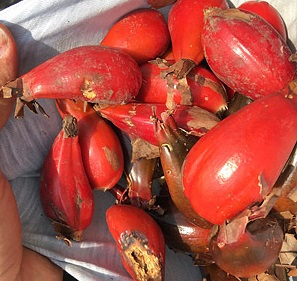
3626 Seed of Heaven ( Aframomum sp. )
Also known as Guinea Pepper. A spice and fruit native to West Africa. The dried seeds are a popular spice locally and were once extensively exported as African Pepper. This ginger from Uganda also has edible fruits borne in clusters at the base of the plant that are harvested for their tangy, sweetish, juicy pulp. The seeds are used as a piquant spice. Can be grown outside in tropical climates, or inside in tubs in warm greenhouses.
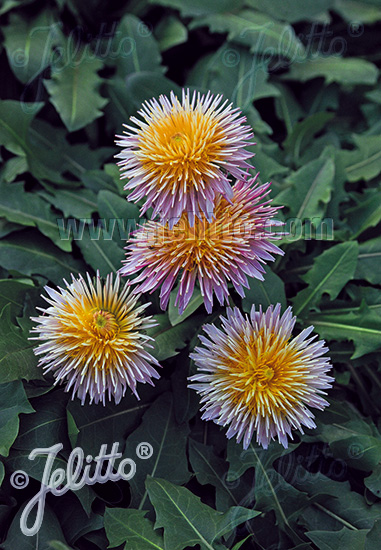
D9929 Pink Dandelion ( Taraxacum pseudoroseum )
Pink Dandelion has a pink with apricot-colored center, rare. Said to be slightly less bitter than the common white variety. Vigorous plants with deep green leaves. Attractive for butterflies and other pollinators. Suitable for natural landscaping. Use for low maintenance plantings. Suitable for pot and planter. Easy to grow.
If you are growing dandelions, why not grow this unique, decorative variety that can be used as a medicinal plant, culinary herb, groundcover or as a honey-bee food plant. A perennial plant for zones 3-8.
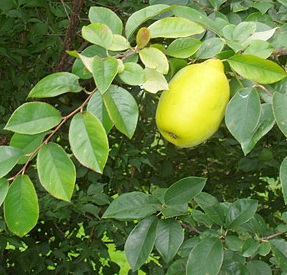
TRZ101 Chinese Quince ( Chaenomeles sinensis )
An attractive semi-evergreen or deciduous tree that can reach to 10 to 20 feet tall. It grows a dense crown with spreading branches that hold smallish leaves and pink flowers.
Flowers are followed by huge, oval fruits (quinces to 5-5″ long) which ripen in fall with a sweetly fragrant aroma. Fruits are edible off the tree or may be used in jams and syrups. Flakey, sycamore-like bark exfoliates into an attractive patchwork of gray, green and brown on the fluted mature trunks of this tree.
The fruits are very aromatic and are placed in a bowl to impart a delightful spicy scent to a room. The wood is hard, dark red and used for picture frames.
The fruit is antitussive, it contains several medically active constituents including organic acids plus the flavonoids rutin and quercetin. It is used in Korea to treat asthma, the common cold, sore throats, mastitis and tuberculosis.
Zones 6-9.
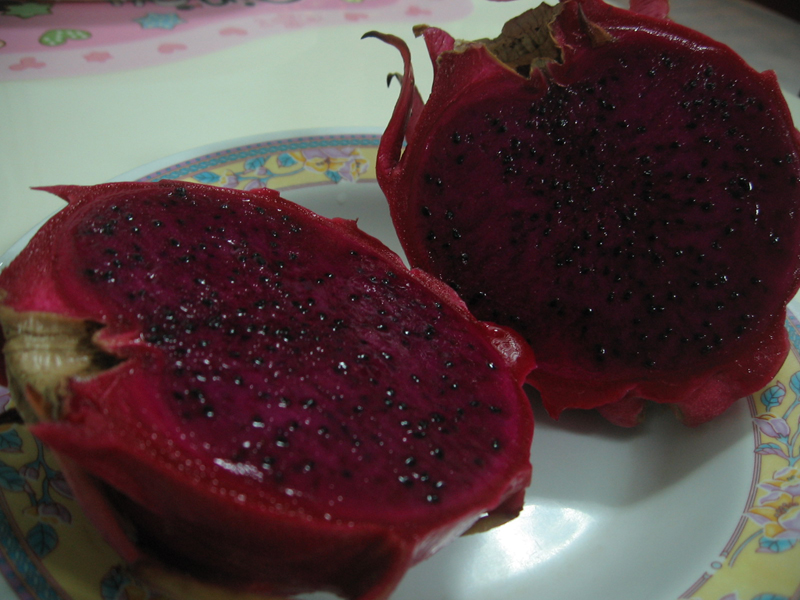
TWT154 Red Pitaya, Red Dragon Fruit ( Hylocereus costaricensis )
Also known as Costa Rican Dragon Fruit. A different dragonfruit with red, sweet and tasty fruits. It grows wild in central america in dry forests. This is the ancestor of many modern hybrids and to many conoisseurs it is still the tastiest, and the best tasting. Its fruits are all-red, especially rich in healthy indicaxanthin anti-oxidants.
Dragon Fruit is native to South America is popular with the Aztec Indians, being mentioned in historical documents dating to the 13th century, the fruit was also enjoyed by the Spanish Conquistador’s.
This Dragonfruit is a hemi-epiphytic fast growing climbing cactus that produces large and tasty fruits with neon pink skin and a striking red to magenta flesh that’s peppered with tiny black seeds. The seeds are quite small and can be eaten with the flesh – think kiwi.
The white to yellow flowers of this species are very large, reaching 8”-12” in length and contain many long narrow petals that make this a very striking flower. The fruit has a very refreshing flavor and is slightly sweet. Dragonfruit is a good source of calcium, fiber, and vitamin C that is low in calories. Perfect for juicing, smoothies, sorbet, or just to scoop out. Protect from Frost. Suitable for containers.
Zones 10 and higer outside, can be grown inside in cooler zones if good light provided.
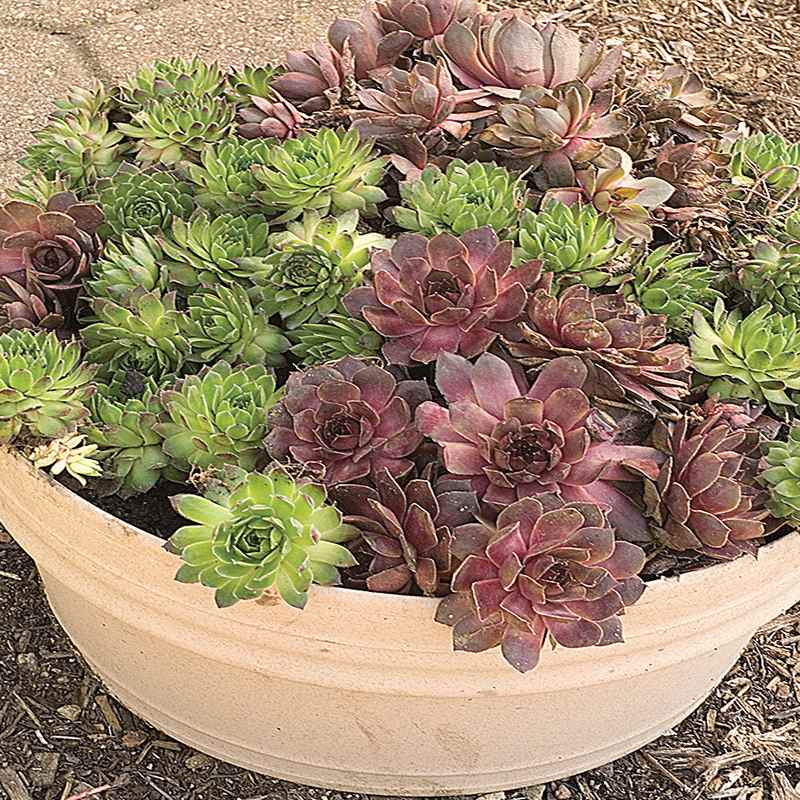
TWT149 Hens and Chicks ( Sempervivum Hybridum ) Mix
Commonly called Hens and Chicks these unique ground cover plants are mat-forming succulents that produce clusters of rosettes. These Sempervivum seeds produce foliages of varying shades of green, gray, and even reddish shades. This low-growing ground cover has parent rosettes that are called the “hens” and the smaller rosettes that grow from the parents are called the “chicks.” Sempervivum ground cover plants are grown for the succulent foliage, but it does produce 12 inch flower stalks in the summer with blooms of pink and lavender.
Grow Sempervivum succulent plants in full sun to partial shade and in well-drained soil. In the South, Sempervivum Hens and Chicks can profit from partial shade. The rosettes die after flowering but are replaced by new rosettes on lateral runners. Sempervivum is an old-time favorite used in concrete planters on either side of the front entry or as a great ground cover plant. Great in window boxes or niches. It needs little water or attention to thrive.
Sempervivum is an easy to grow evergreen perennial perfect for xeriscaping, in a mixed perennial border, or grown with other Mediterranean herbs. They are hardy to USDA Zone 6 and bloom all summer long with fragrant musky foliage. Hens and Chicks have been cultivated as far back as ancient Roman times. Romans grew them in vases in front of their houses.
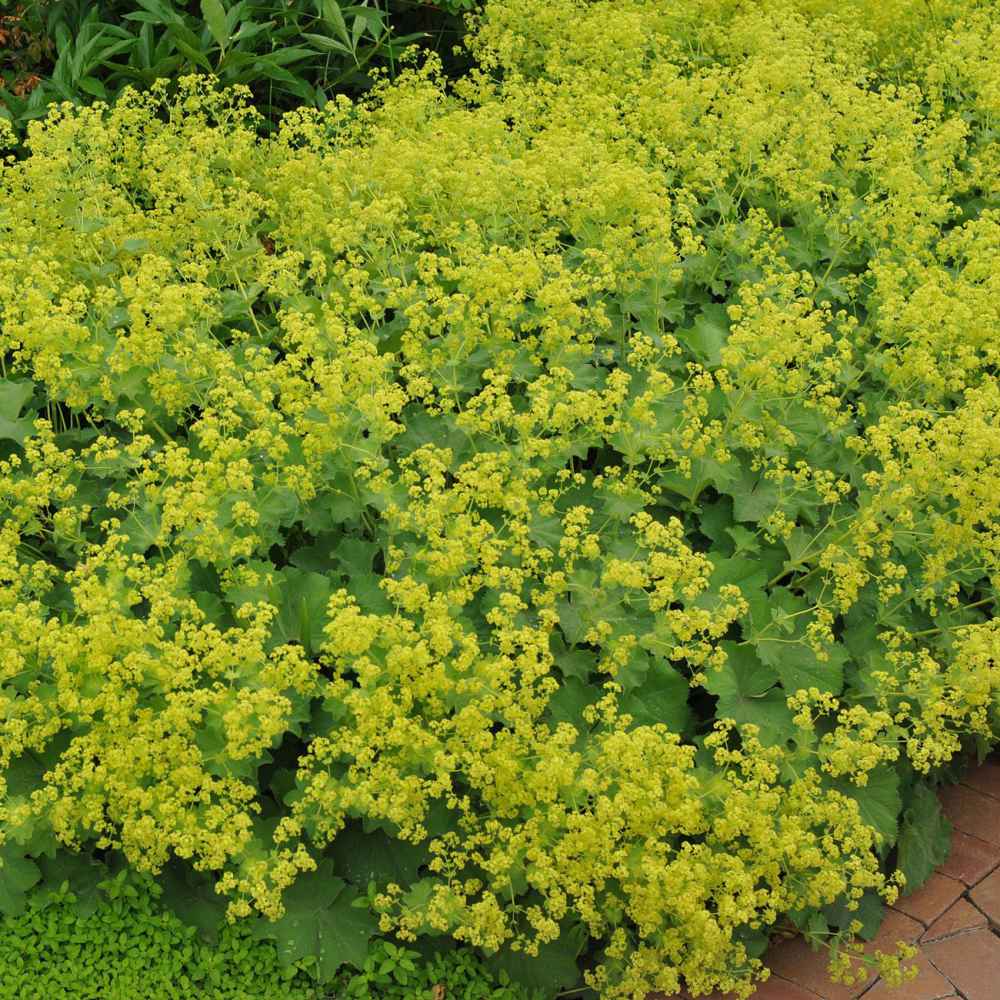
TWT145 Lady’s Mantle ( Alchemilla mollis )
This popular flower is perfect for the garden. With its olive colored, crimped velvety leaves which cup to capture the dew and rain and its frothy sprays of yellow clusters, it is certainly appealing to the eye. The Achemilla Mollis plant is bushy and makes an excellent border or edging plant. The Lady’s Mantle flowers are excellent for cutting, and the yellow blooms work in nicely in flower arrangements
Lady’s mantle is an interesting plant to add to the garden, especially in shady borders. It is also commonly used as a ground cover and makes a nice edging when kept in bounds. You may find lady’s mantle in wreaths and bouquets as well, either freshly cut or dried.
The name alludes to the fanlike shape of this plant’s light green foliage. A cottage garden classic, it produces masses of tiny, greenish-yellow blooms that erupt from fan-shaped foliage. Extremely drought tolerant and an excellent cover plant, it will thrive in sun or shade; a wonderful companion for roses. Long lasting as cut flowers. A perennial for zones 3-8, growing in clumps about 20 inches tall.
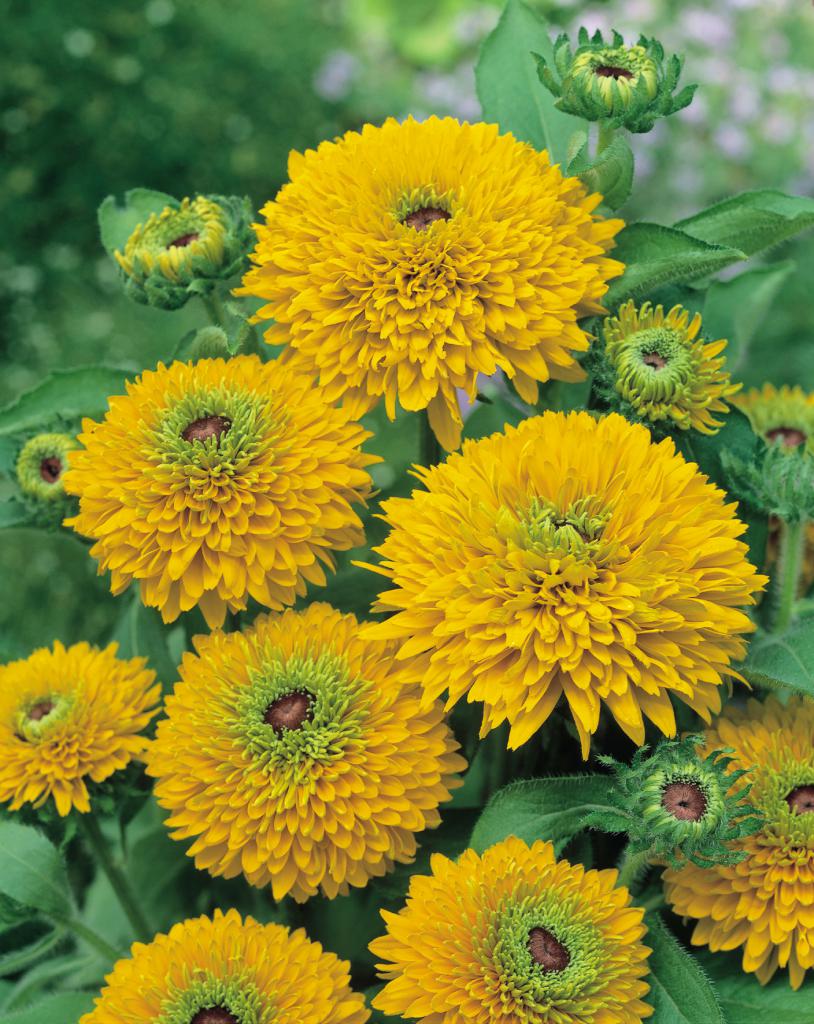
TWT142 Maya ( Rudbeckia hirta )
The first dwarf, double flowering Rudbeckia with large blooms on strong stems. Rudbeckia hirta ‘Maya’ with its golden yellow petals is a pioneer in compact double flowered dwarf Rudbeckia. This garden jewel is reminiscent of the outstanding innovative qualities of the ancient Maya civilization. ‘Maya’s good plant habit and excellent overall garden performance ensured that this stunning innovation clinched a Fleuroselect Gold Medal. Rudbeckia hirta ‘Maya’ will reward its grower with spectacular borders, flowerbeds and containers.
This compact strain features fluffy double flowers of golden yellow, with a kiss of green in the center, almost like a Zinnia in appearance. An outstanding cut flower. Height: 18-20 inches. Spacing: 18 inches. Hardiness Zone: 5-9.
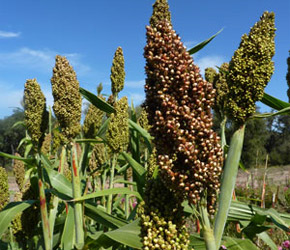
TPF208 Rox Orange Sugar Cane
Not to be confused with sugar cane grass grown in Florida ( Saccharum ) for sugar production.
Rox Orange, or Waconia, is a medium-early maturing variety that was developed for syrup production by the Wisconsin Agricultural Experiment Station. It has also been grown for silage in the Upper Midwest. Rox orange is a great variety of sorghum for making a delicious syrup.
The “sugar” refers to the sweet variety of this cane compared to types grown only for forage. Grow this old time sorghum favorite for forage or syrup, pieces of mature cane heart can be chewed like candy. Seeds can even be popped like popcorn.
Grow same culture as corn, but prefers well drained sandy loam.
Grows to 8 ft. tall and matures in about 110 days.
Can be cut for silage after 70-80 days, or be used for
livestock grain if left to full maturity. Best adapted to well
drained loam. Will mature in any area with a long enough
growing season for corn.
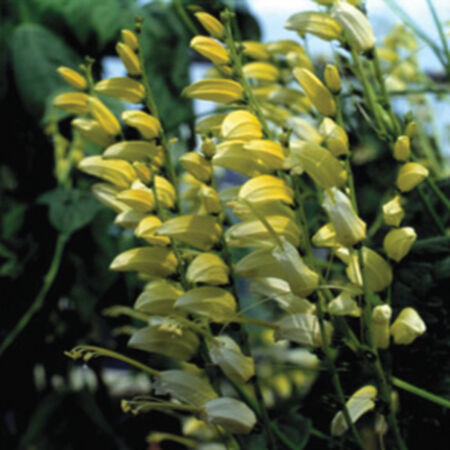
TWT130 Citronella ( Mina lobata )
This beautiful vine attract hordes of hummingbirds and butterflies.
The Mina Citronella is a citrus yellow flower with long stems that is a rare variety of Mina Lobata and is said to be used for keeping mosquitos away ( we cannot verify how effective the plant is for this use yet ). This variety starts out with dark yellow buds that transforms to a citrus yellow, and ending with creamy white tips. This variety’s blossoms are held upright on long stems making a nice contrast against its dark green foliage. This easy to grow spectacular vine grows to 15 feet in full sun. Mina’s climbing vine is super in baskets and will bloom in 10 weeks from seed.
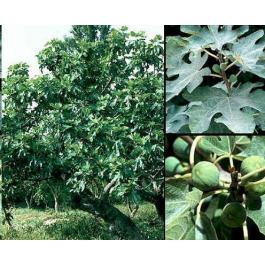
D9915 Common Fig ( Ficus carica )
Ficus belongs to the Mulberry Family. The Common Fig is native to the eastern Mediterranean and western Asia region where it grows wild and has been in cultivation for centuries. The cultivated Fig forms a shrub or low-spreading tree.
The fig is a picturesque tropical looking tree or shrub with a dramatic spreading habit. The breadth is often wider than the height of 15 to 30 ft (4.6-9 m) with equal spread. This deciduous, low-branching tree is usually single trunked, with pale, silvery gray smooth bark. In colder regions, figs are grown as bushes with multiple stems and branches close to the ground that are laid down and buried before winter. The Ficus makes an especially attractive specimen in the landscape. Plant one on an expanse of lawn, where it’s graceful spreading shape and smooth twisting branches command attention in all seasons.
The alternate, long petioled, dark green leaves are broad-ovate to nearly orbicular in outline and may become 20cm(10 in) long and 10-20 cm (4-10 in) wide with 3-5 lobes. The upper surface is thick and ribbed while the underneath is finely haired .The leaves texture is rough and they can irritate skin.
The Genus Ficus is unique for bearing its flowers inside a nearly closed receptacle, or branch, which ripens into a fleshy fruit called a fig. The small flowers are produced twice in the season. The first ones (the breba crop) are produced near the ends of the shoots of the preceding flush of growth, whereas the second crop (the main crop) is produced in the axils of the leaves on the new growth.
The mature fruit is pear shaped and variable in size and range in color from a greenish-yellow to purple. The edible fruit is a hollow succulent receptacle with many ovaries on the inner surface, which may or may not produce seeds, depending on the variety.
Figs usually begin bearing fruit within two years and may bear twice per year. Figs grow nicely and will bear fruit when grown in containers where they can be artfully pruned to create a living sculpture to decorate deck or patio. This is convenient for two reasons: cold climate growers can move their figs indoors in winter and the plants can be removed from the patio when the fruit begins to (over)ripen. The edible fruit are extremely attractive to birds.
Hardy for zones 7-10. Note that with winter protection, it can be grown as far north as Zone 5. The Ficus Carica likes reflected sun, full sun, or part shade. Fig trees are tolerant of poorly drained soils and grow well in relatively infertile soils. When fully dormant, fig trees can tolerate temperatures as low as 10 to 15°F (-9°C). Even if frozen, figs often will restart from the roots and produce a crop the following summer. They are drought tolerant, once established. Figs responds well to pruning and can be espaliered or pruned heavily in the dormant season for size control and to increase the main crop. Water the tree every month or two while it is growing, and once or twice per year when fully grown. They grow much better with a monthly fertilizing program and deep watering twice a month in summer.
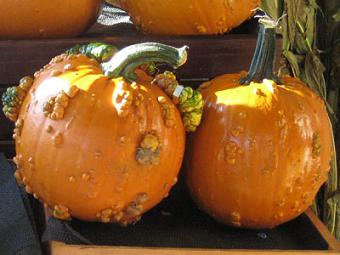
LET242 Knuckle Head
Why have ordinary pumpkins for Haloween when you can have these weird, mutated looking gems. Spectacular warting makes them the star of the show. Large super-freak type, warted, scary for unwary, 12-16 pound pumkins, 105 days.
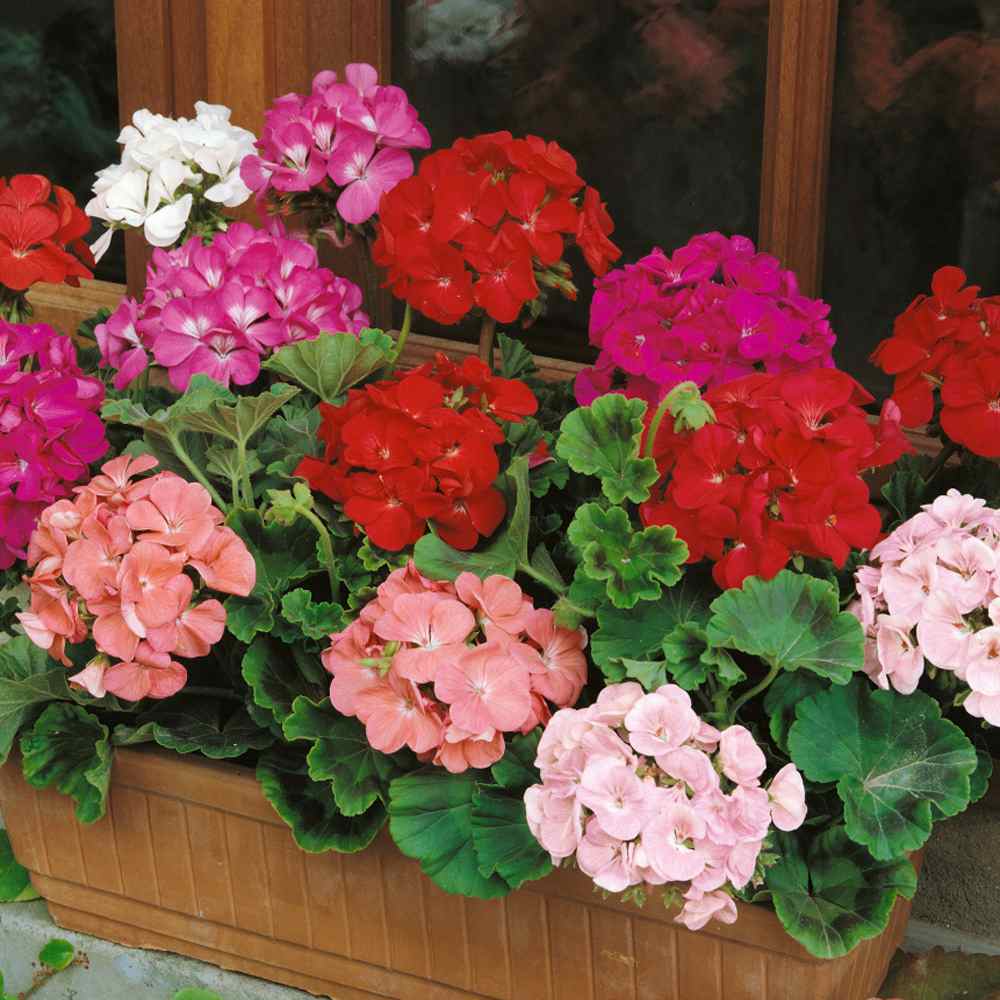
LET214 Geranium F2 Mix
Get all of our most popular colors in one beautiful mix of geranium seeds. This flower seed mix will produce big flowers reaching 4 – 5 inches across and dense foliage with a bushy habit and rich, dark green leaves. With large bloom clusters and striking zoned foliage, this seed mix is a show stopper all summer through fall until the first frost. Use this flower seed mix to fill your flowerpots, beds, and borders for an extra-long season of color!
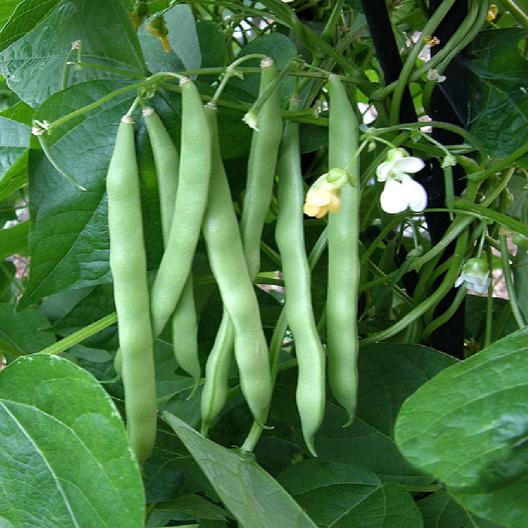
6005 Blue Lake FM1K Pole Bean
A tender and delicious variety that is excellent due to its versatility in the kitchen! Blue Lake Pole vines can grow up to 12 feet long, and due to their growth habit, they require some kind of growing guidance such as poles or strings. The oval pods produced are crisp and tender, growing up to 6 inches long. This variety is a type of green or string bean, a commonly grown vegetable. They grow quickly and are easy to grow, making them an excellent addition to the home garden. 60-70 days.
6″ long stringless, dark green, round, straight, smooth pods that set from base to the top of the vine. Stay sweet and crispy even at maturity! Yield until frost. Good flavor as a snap or shell bean.

JB073 French Hollyhock ( Malva sylvestris mauritiana )
From the Mallow family, this French Hollyhock will bloom the first year from flower seed. This very showy perennial with 2-3 inch lavender to purple blooms will put on a profuse display of color. It reaches 36 inches tall and nearly as wide. It is often a short-lived perennial, but it liberally drops its own flower seeds to continue producing the wonderful flowers year after year. It makes such a statement in the garden that all of your visitors will ask what it is. Heat and drought are not a problem for this perennial.
3-4 feet tall. Zone 3-8. The purple flowers have dark stripes that radiate from the center. Each stem carries multiple blooms all summer. The plants seed prolifically.
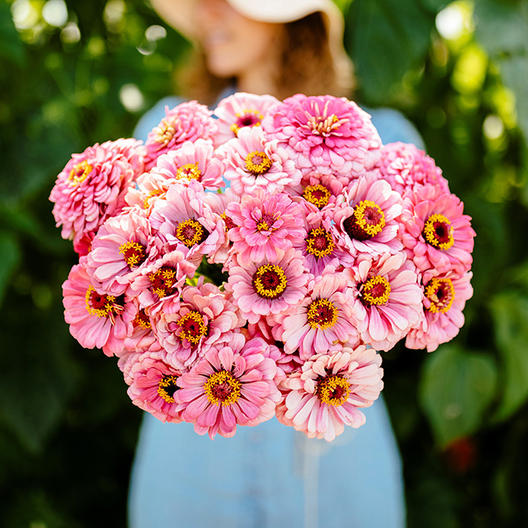
TGL032 Illumination Pink
One of the rarer varieties of Illumination series, (sometimes called Pink Illumination) it offers beautiful, luminous pink petals on large, double blooms. As captivating in the vase as in the garden, Illumination Zinnia grows well in full sun with moderate water needs. Grows about 36″ tall.
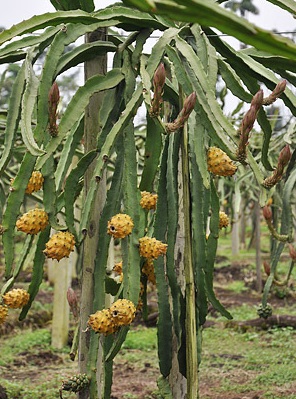
D9917 Yellow Pitaya, Yellow Dragon Fruit ( Hylocereus megalanthus )
This rare cactus fruit has a unique sweet flavor. The seeds are slightly larger than most dragonfruit, and the inside fruit is extremely sweet and juicy!
Yellow Dragon fruit have an oblong shape and are slightly smaller in size than the more common red varieties. Their thick yellow skin is covered in small knobby protrusions, which when immature displays small spines that will naturally fall off as the fruit matures. Beneath the skin is a dense white flesh containing numerous petite, edible black seeds. Yellow Dragon fruit has a crisp, juicy texture and very sweet, tropical flavor with floral hints and no acidity.
Yellow Dragon fruit is typically eaten raw, either straight out of the skin or scooped out and cubed, balled or sliced. For the best flavor, refrigerate the fruit for 2 hours before preparing raw. Add to tropical fruit salads or serve alone as dessert. Yellow Dragon fruit flesh can be pureed and made into a sauce or syrup or added to smoothies and cocktails. Freeze the pureed pulp for sorbet or a granitas. Use the flesh to flavor pastries or other baked goods. Yellow Dragon fruit can be kept at room temperature for a few days and will keep in the refrigerator for up to a week.
The Yellow Dragon fruit has been used for centuries by the native people of northern South America. It was used for both medicinal and culinary purposes. It has only been since the early 2000s that Yellow Dragon fruit was approved for export to North America and Europe.
It is native to the northern region of South America, what is now Colombia and Ecuador. The fruits are still cultivated there, with Colombia being the largest producer, and are exported all over the world. They are also grown in Bolivia, Peru, and Mexico and in California and Florida in the United States. Growers specializing in rare fruits in the United States, specifically in southern California and Florida, grow Yellow Dragon fruit on a smaller scale. The Yellow Dragon fruit cactus has long extending stems that can grow up to 20 feet long and require some form of trellising or support to grow on. The cactus prefers arid tropical and subtropical climates and is fairly heat resistant and somewhat cold-hardy. Yellow Dragon fruits can be spotted at most markets and specialty stores and at farmer’s markets in Southern California and Florida.
Zones 10 and higer outside, can be grown inside in cooler zones if good light provided.
Source link








